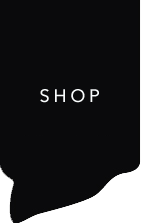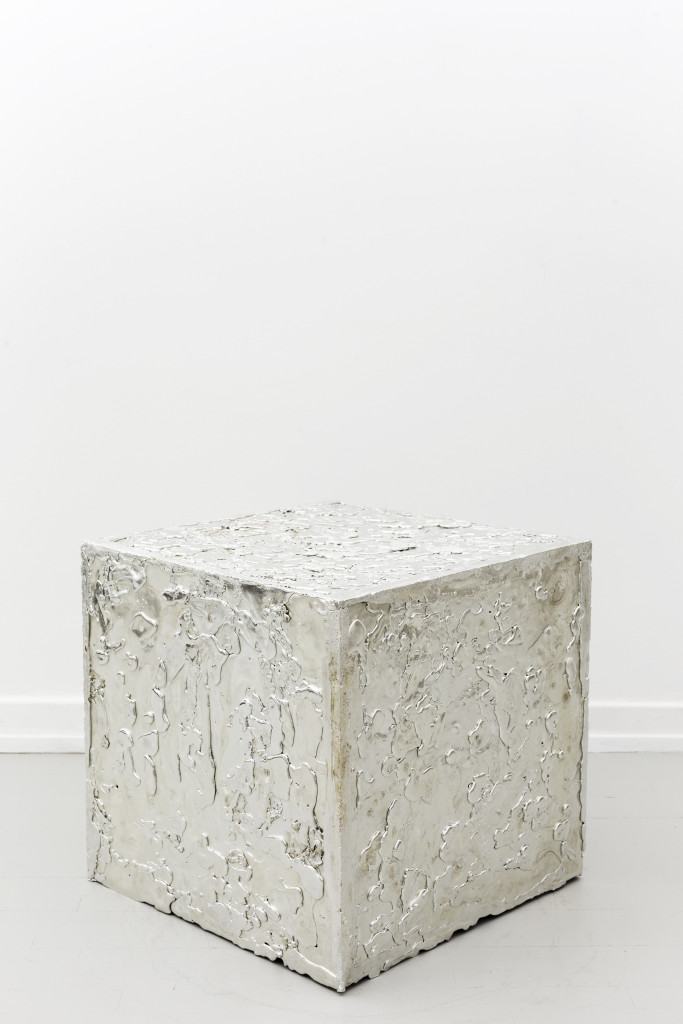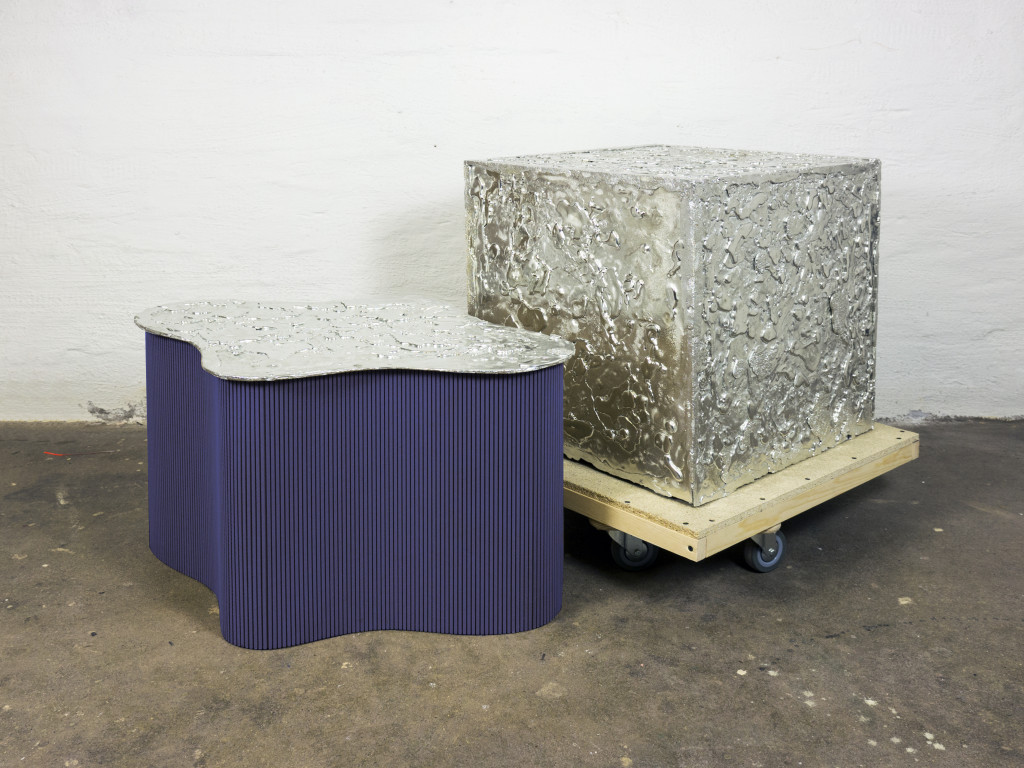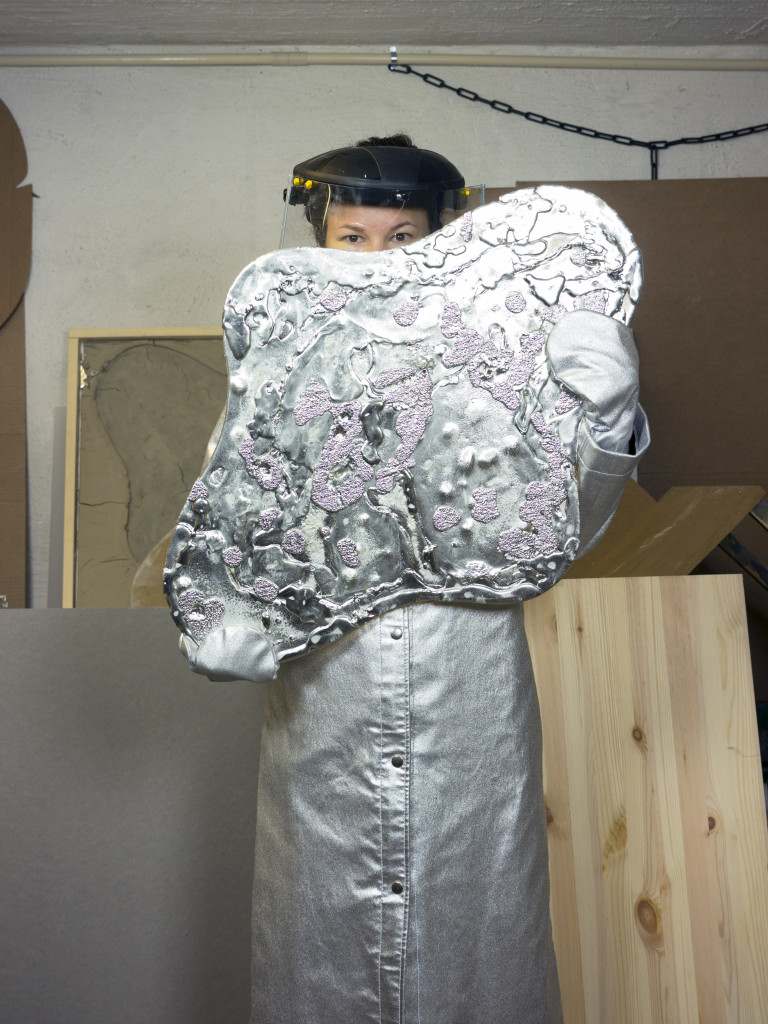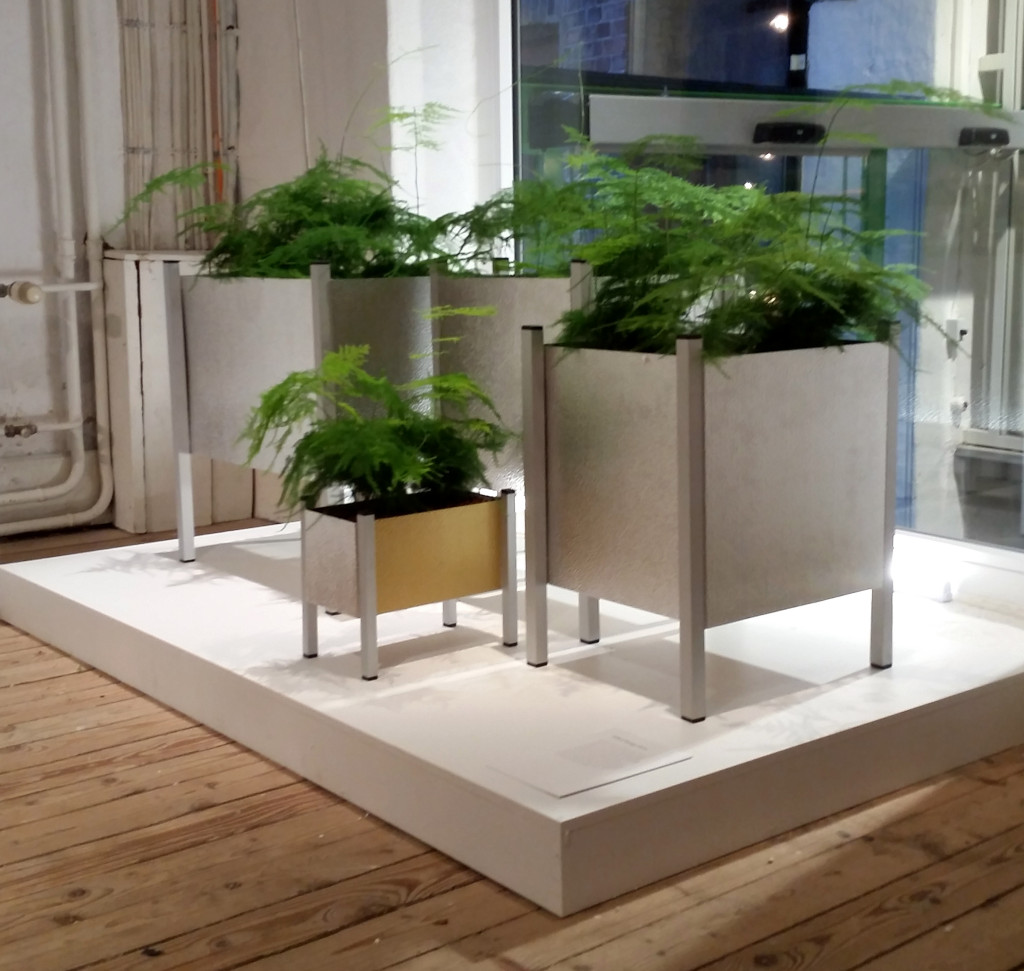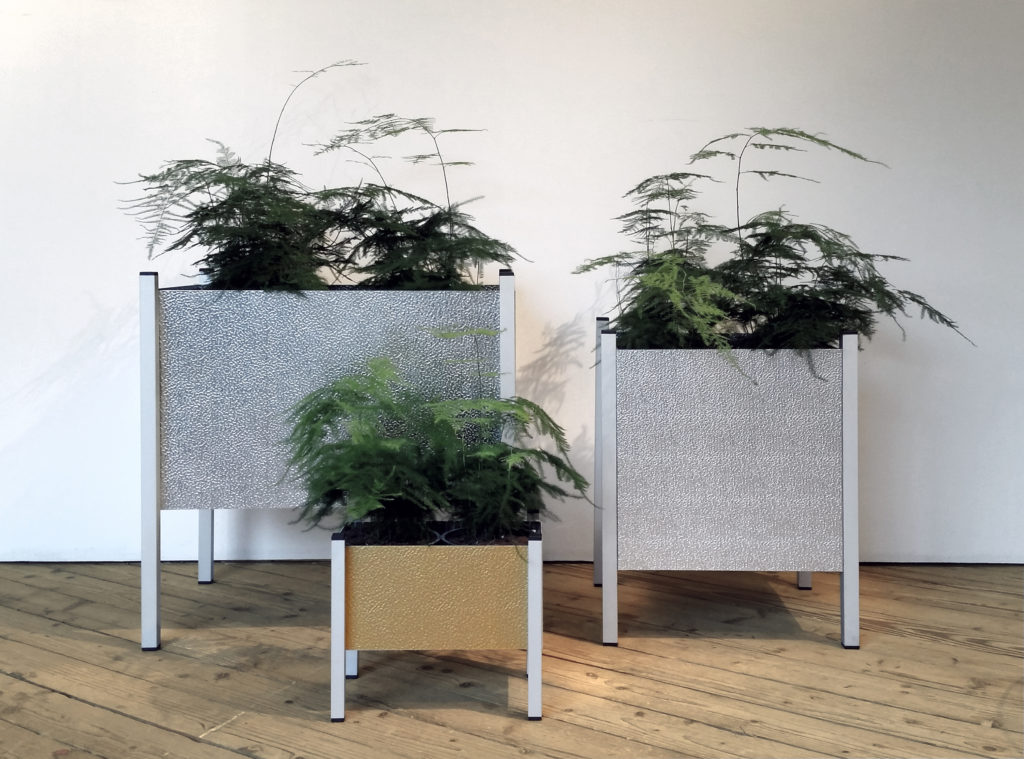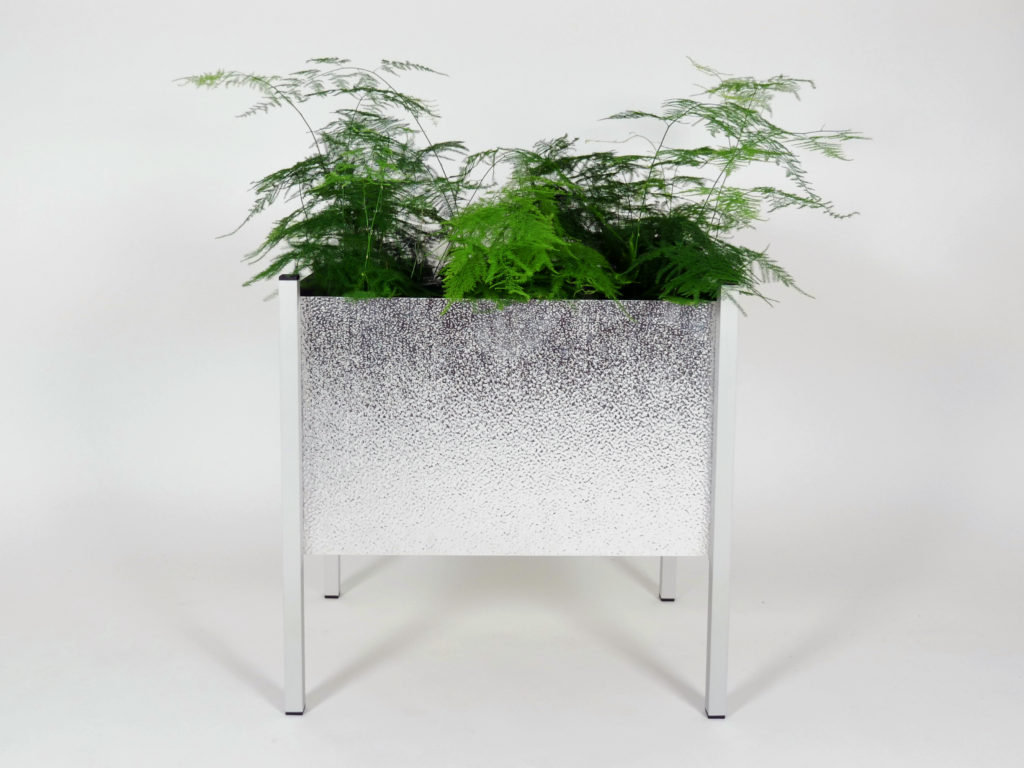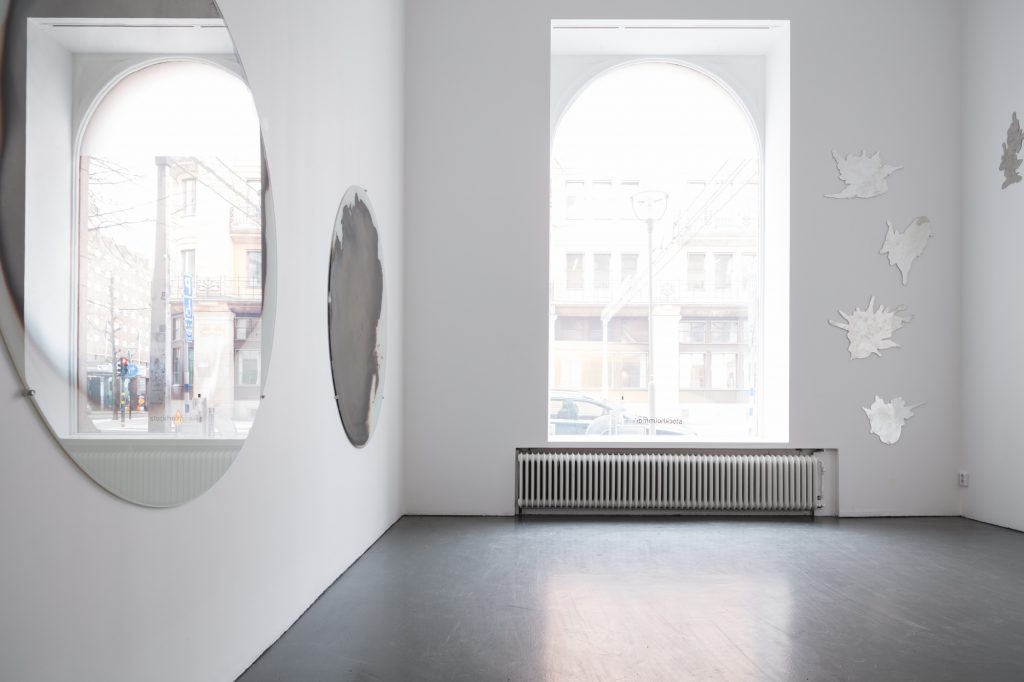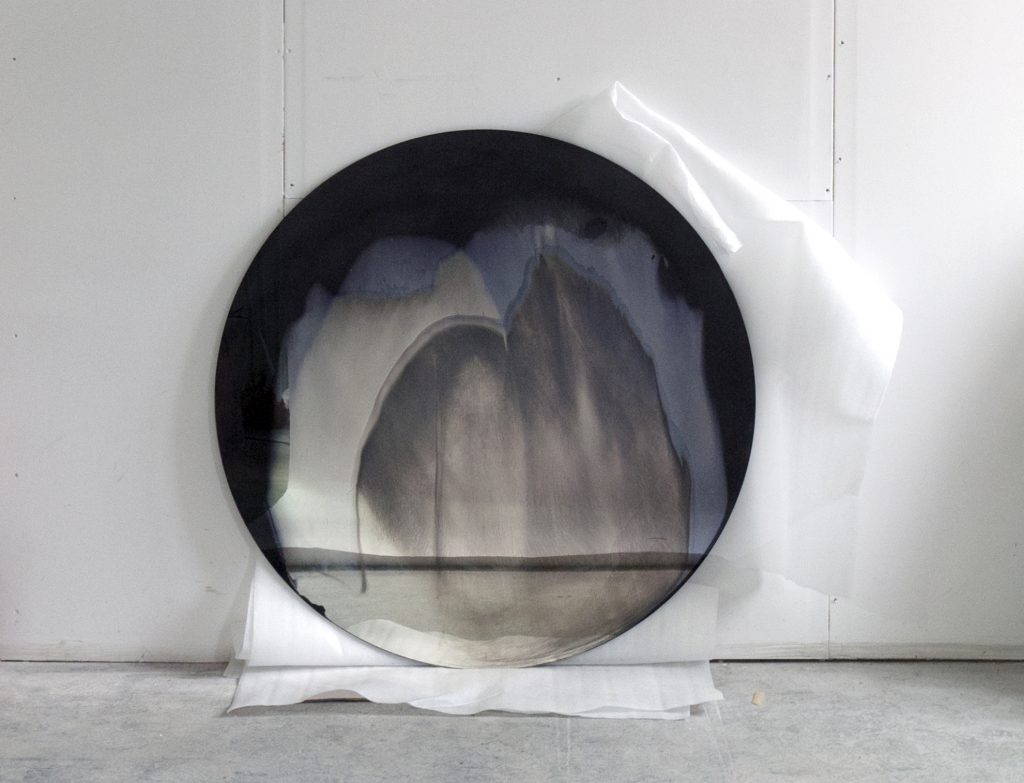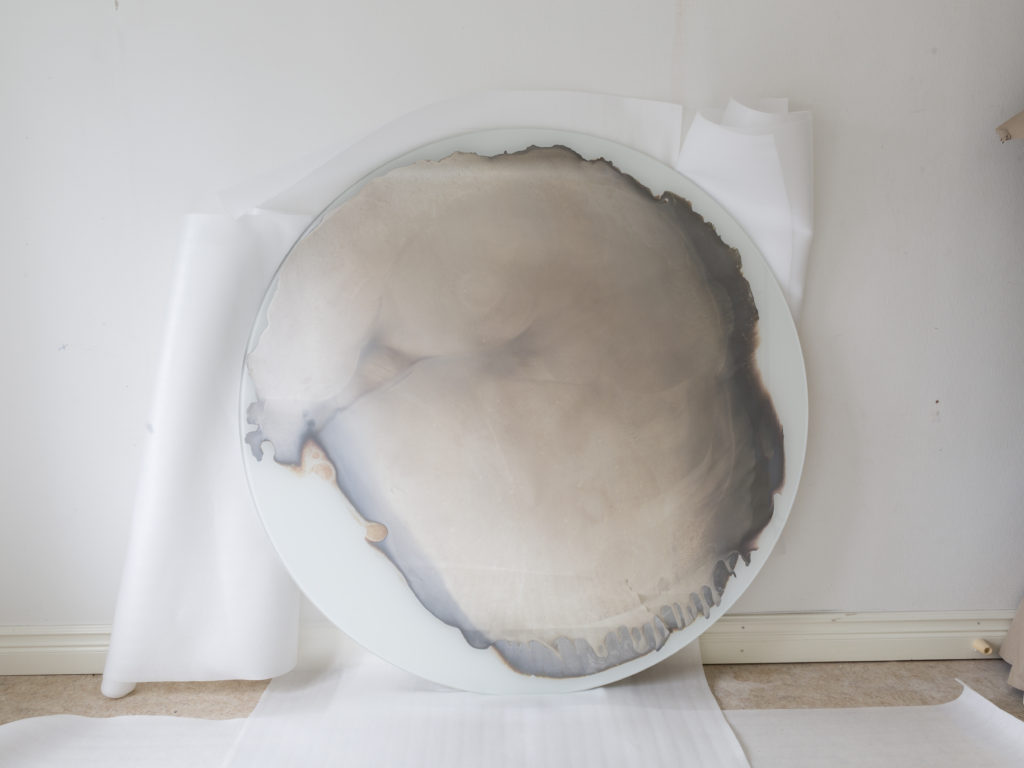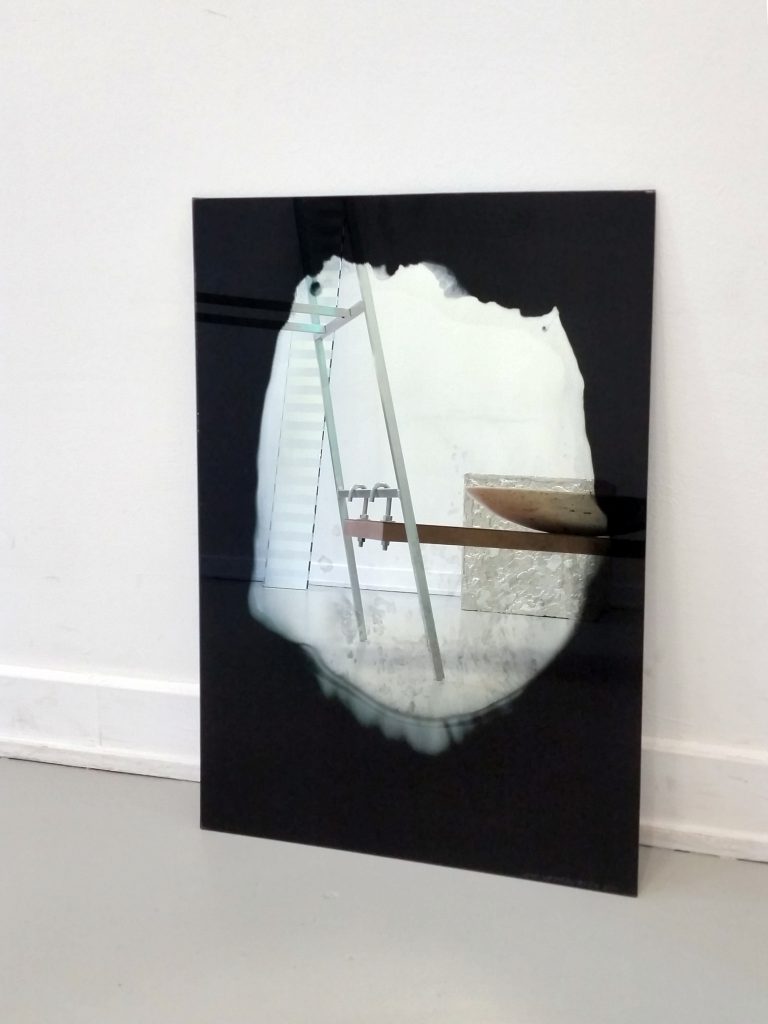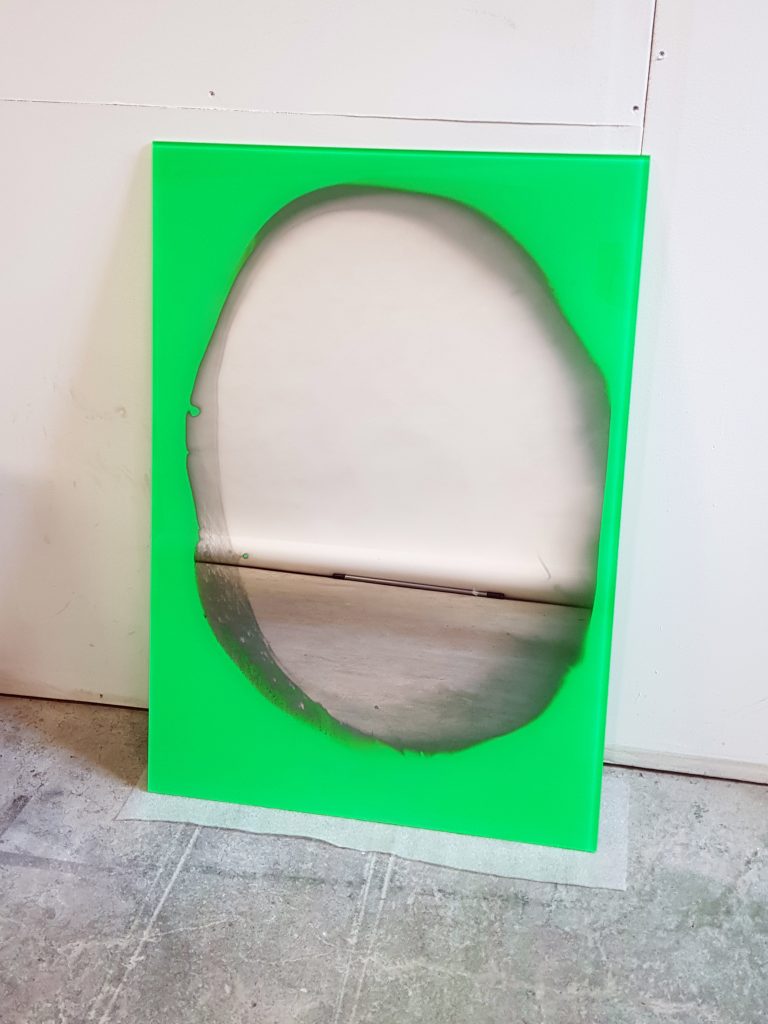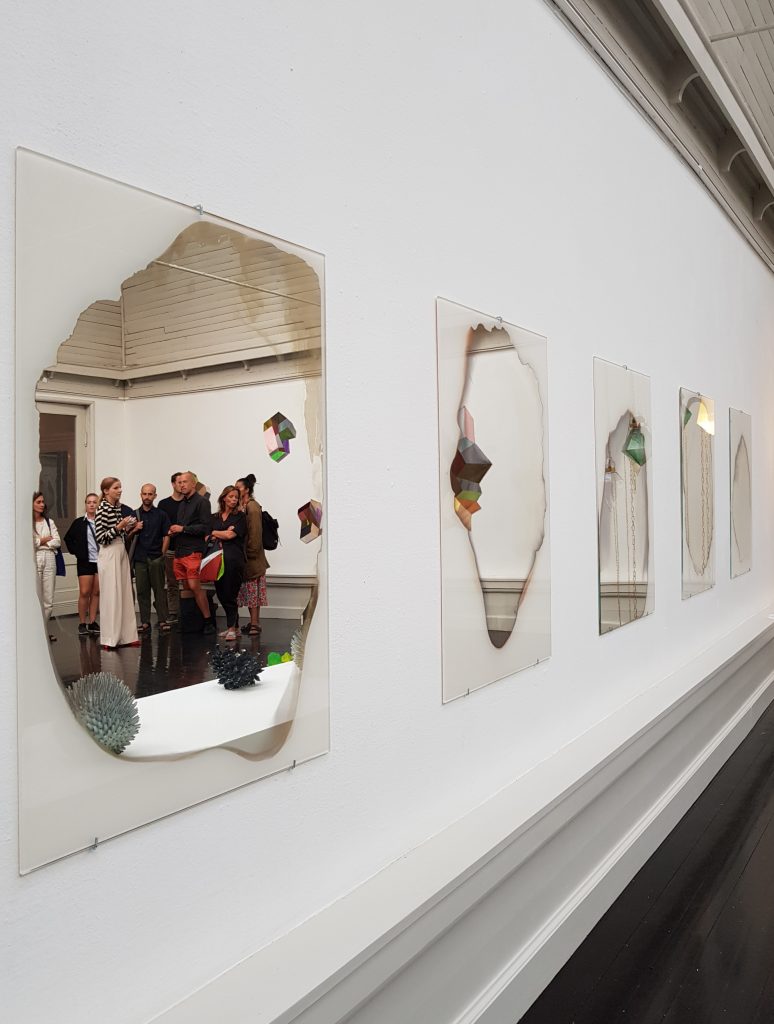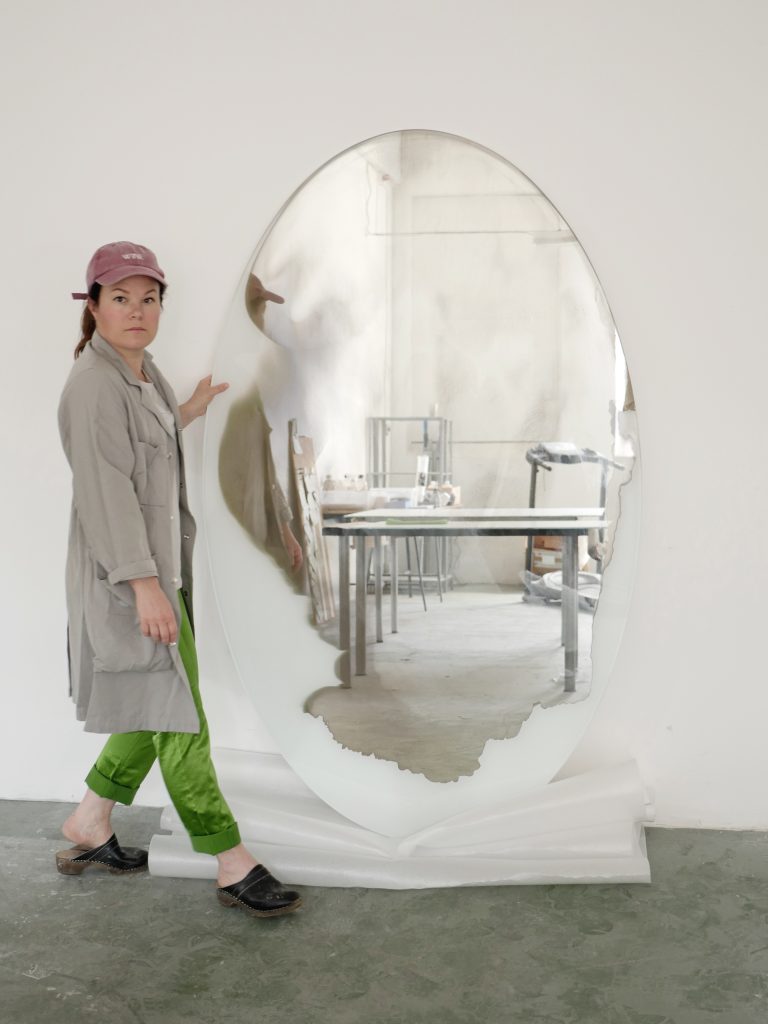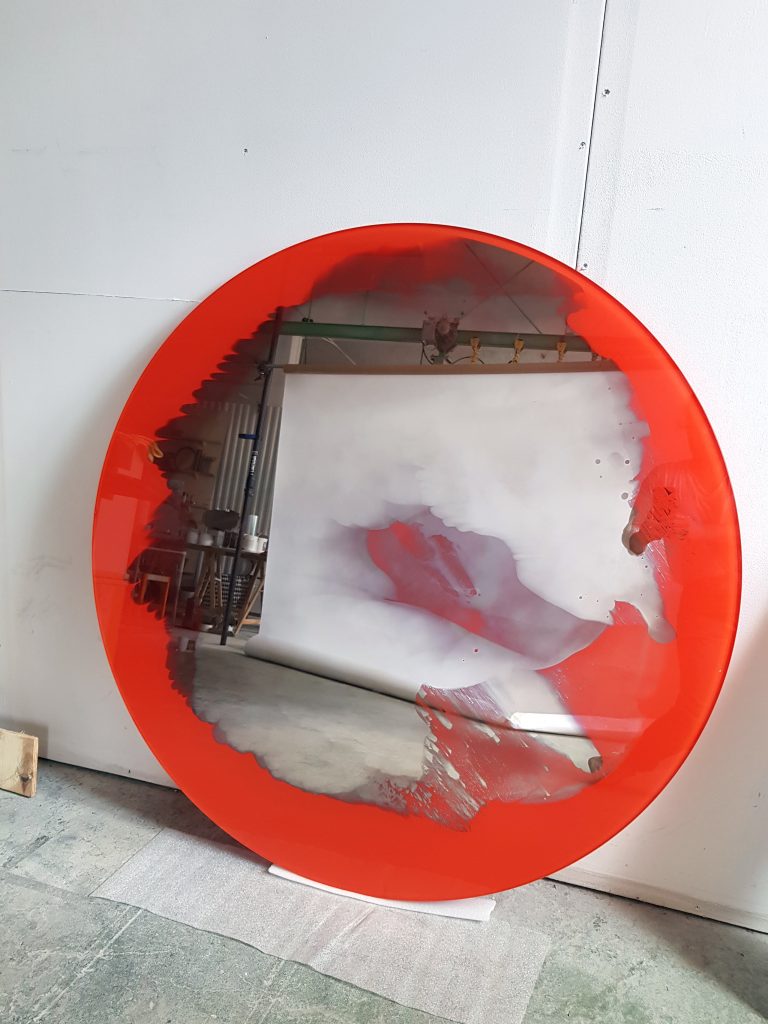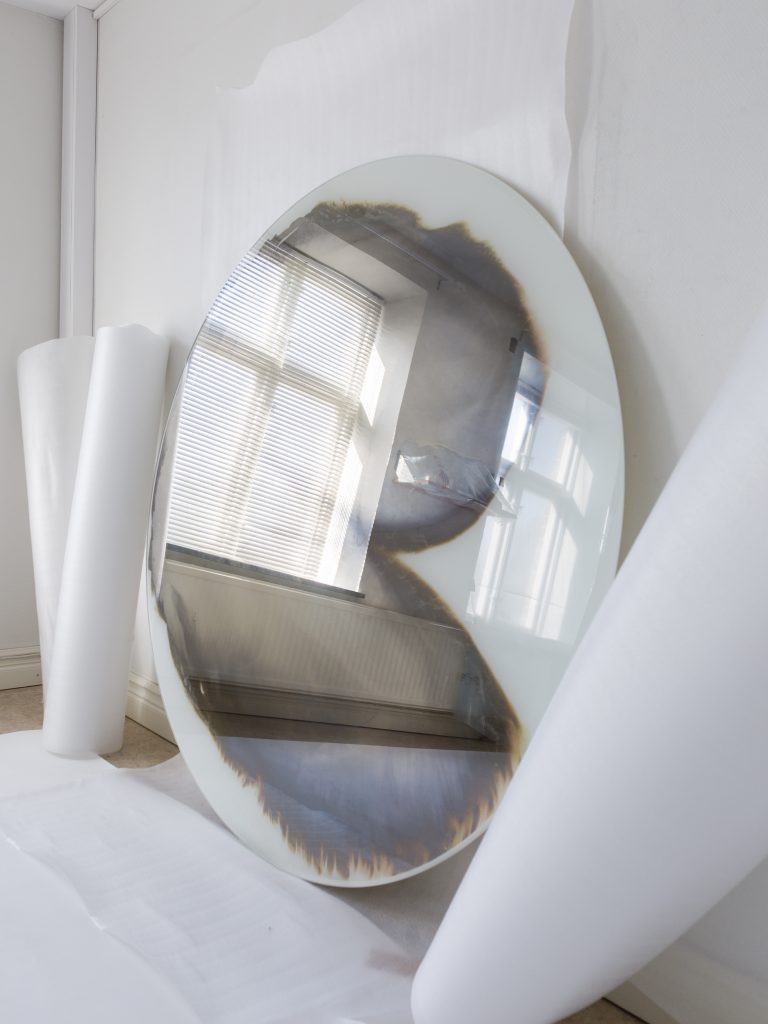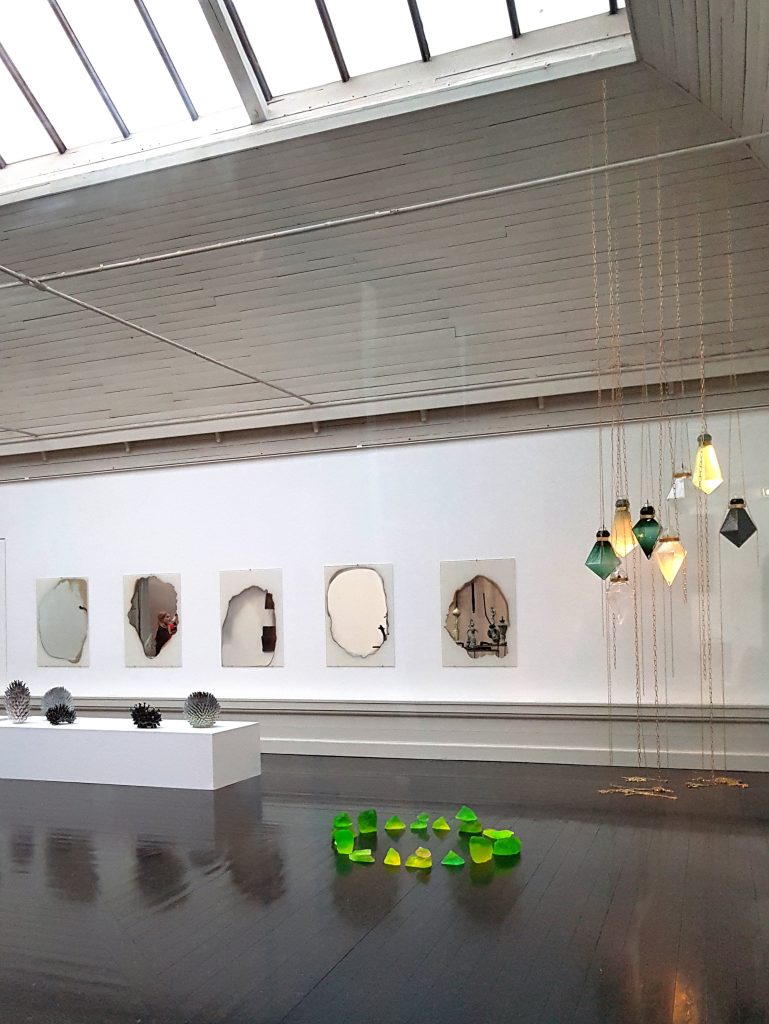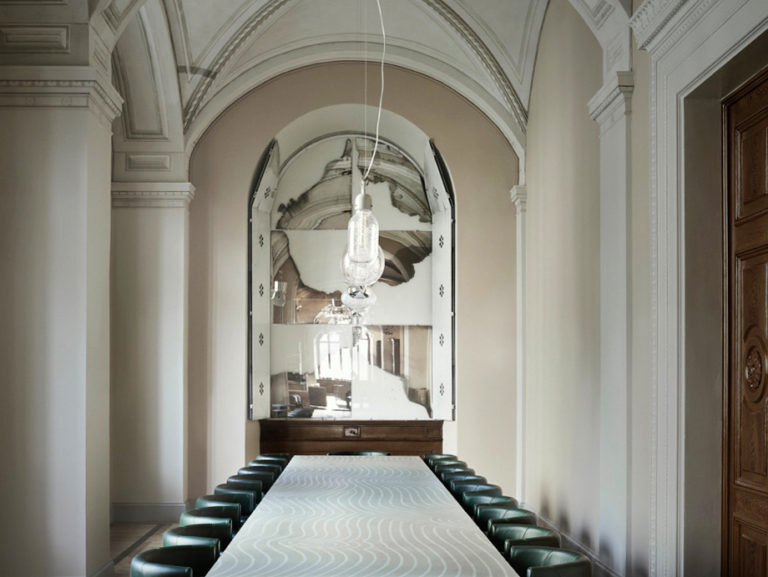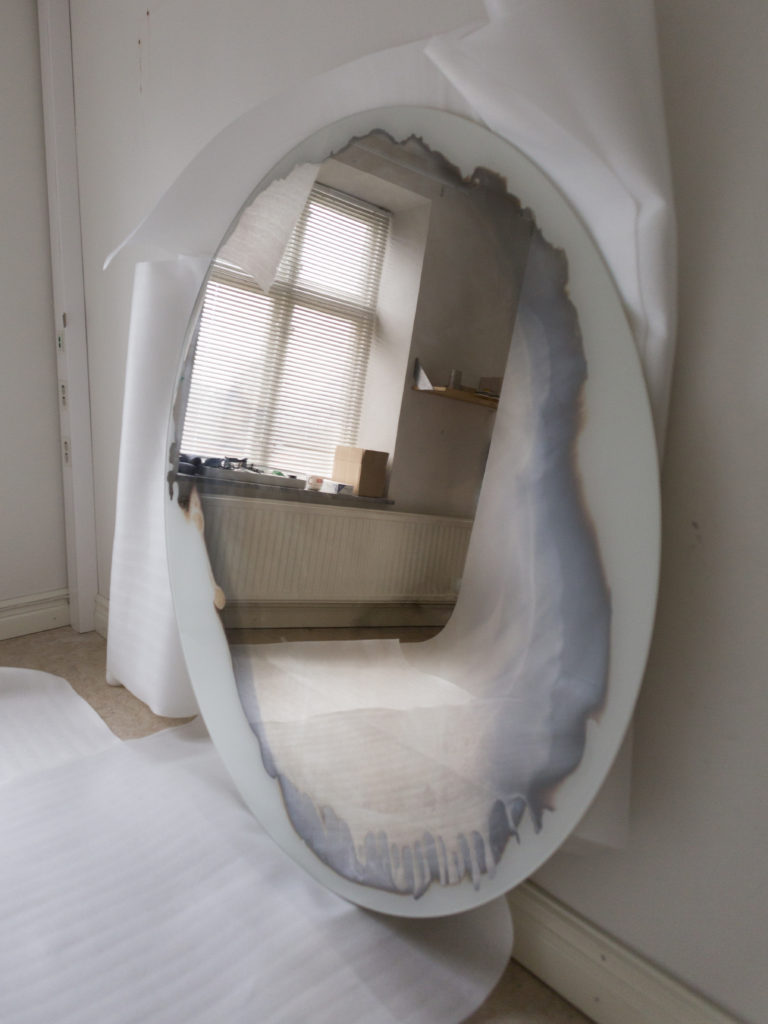-
Macro Composite
Is it possible to obtain unique results within industrial production? Jenny Nordberg has examined the issue in the Swedish foundry industry for the past year by working with three founders parallel. The result sought for has been a large scale macro-composite made of several assembled cast metals. During the process, there has been an interesting turn of events – each of the three foundries have had different theories, all of which contradict each other. The project is ongoing and has more to come.
-
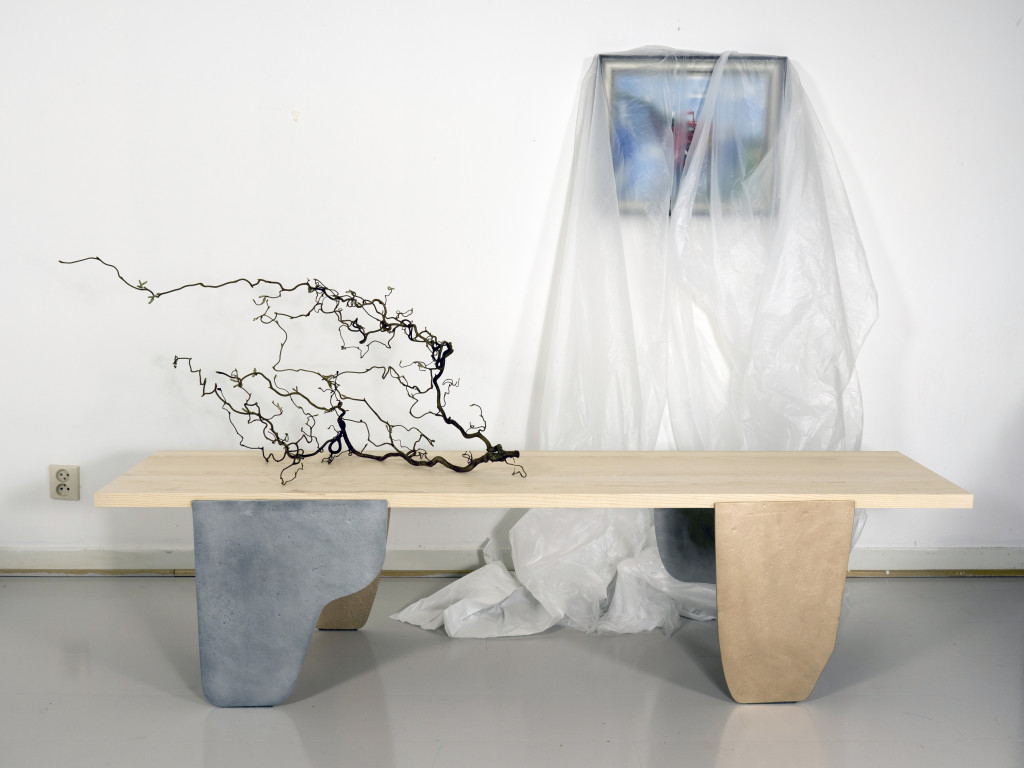
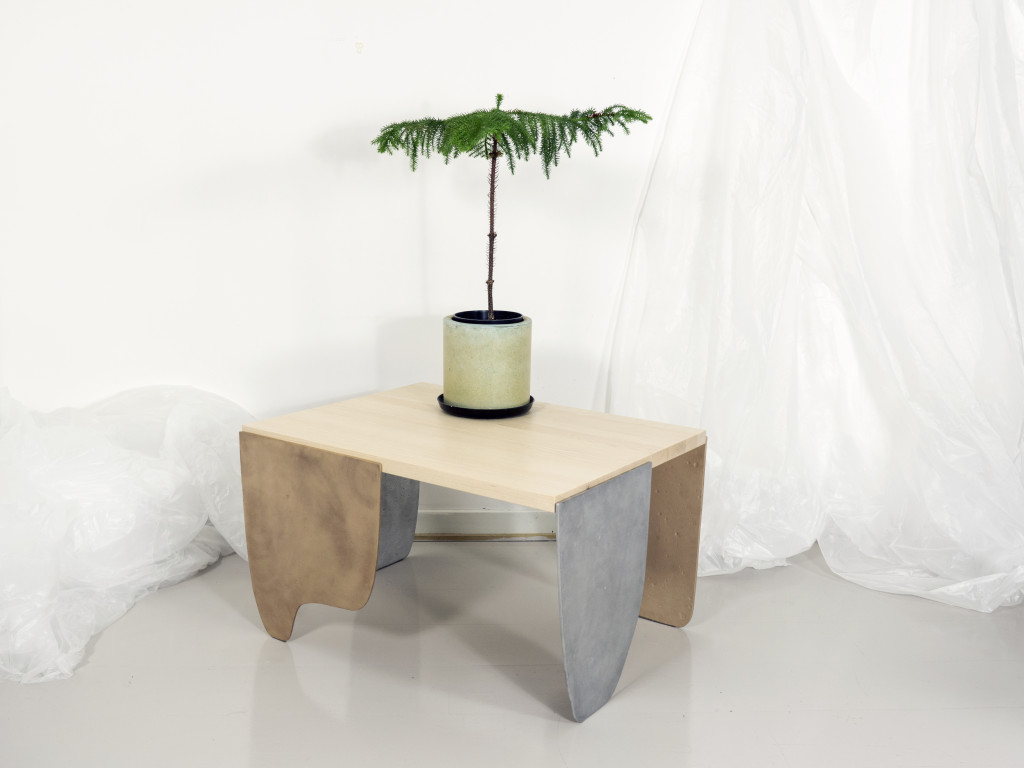
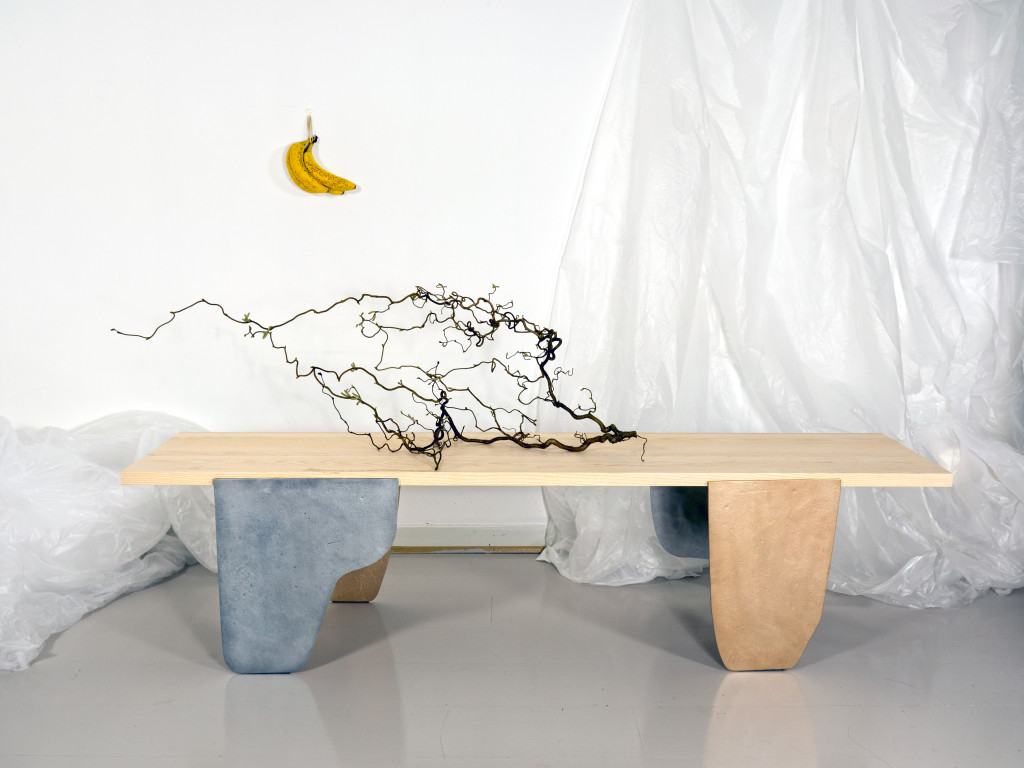 Composite table
Composite table
Category Archives: Projects and Collaborations
-
Studio Adapted Industrial Processes
Studio Adapted Industrial Processes – Tin Casting
Jenny Nordberg created the Tin Plinth with the cubical geometry of the classical gallery plinth in mind. The material in the plinth however – tin, is maybe less classical. Often working with the tension between the hand made and the machine made Nordberg wanted to explore the production of a sheet material that could be used to create a plinth. To do this she used the limitations of a studio environment as her framework, and developed a method to make sheet metal by casting tin in large molds. The outcome is an uneven and rough, almost brutal expression. The Tin Plinth was made for The Plinth Project exhibited at Etage Projects 18/11-16-21/1-17.
Also included in this collection is the Tin Table.
These are the first objects within a coming series of several industrial processes adapted for studio production.
-
-
Default Plantage
Often working with the limitations of standardisation Nordberg developed Default Plantage where looks and measurments are based on the conditions of the globalised production industry. Default Plantatage can be seen as a pre phase or perhaps even the end of an era as Nordbergs next project, The Vocabulary of the Un-standardised, takes place in a context where no standards or rules are present.
-
-
At Your Place Production
No factories, no transportation, truly local, at your place.
At Your Place Production is a performative production concept and service researching if production can be done at the consumers place (as in home, office, institution, gallery etcetera). By doing so, could long distance transportations and factories be avoided? Could this also work in favour of giving the consumer a deeper and longer relationship to objects?
The following products are available for At Your Place Production service:
– Thumbs on a row hook
– 3 to 5 Seconds Candle holder
– 3 to 5 Seconds Bookend
– 3 to 5 Seconds Hooks from thumb
– 3 to 5 Seconds Explosion poster
– 3 to 5 Seconds Mirror with coloured back paint (Light Grey, Computer Beige or Lavender Blue)
– Object on request – Do you have a special need for a specific type of object, please don’t hesitate to ask for custom made products.For booking and price estimation please email.
-

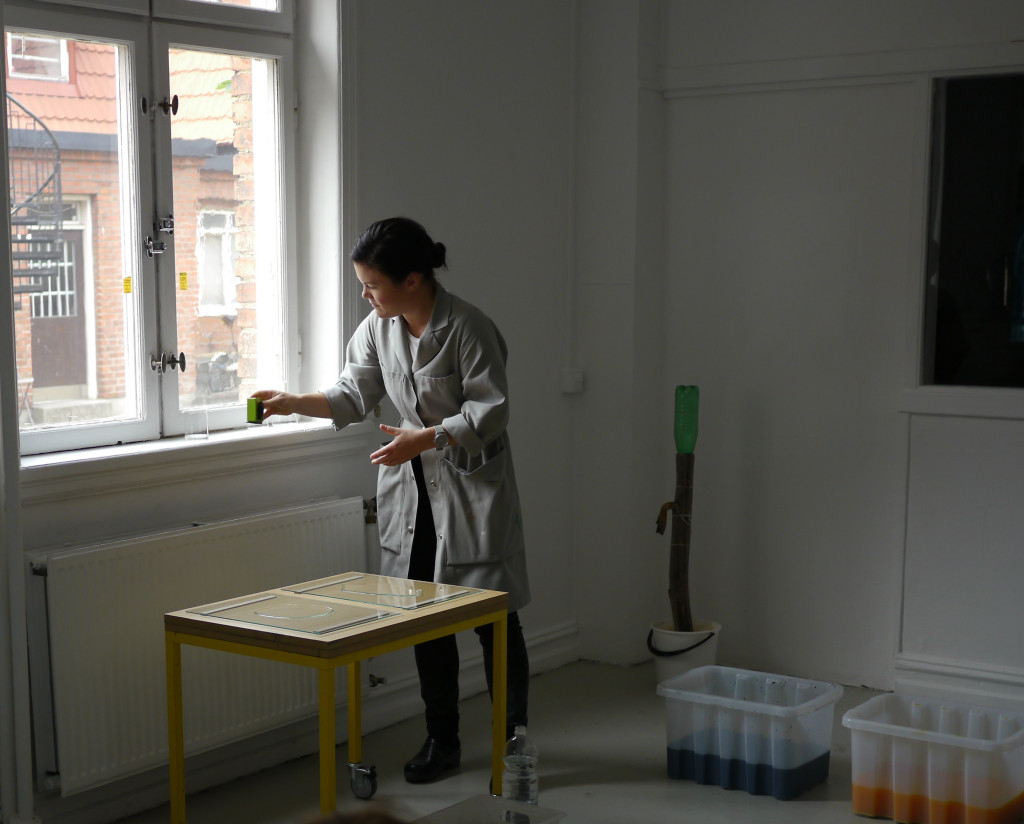
 Thumbs on a row hook
Thumbs on a row hook 3 to 5 Seconds Candle holder
3 to 5 Seconds Candle holder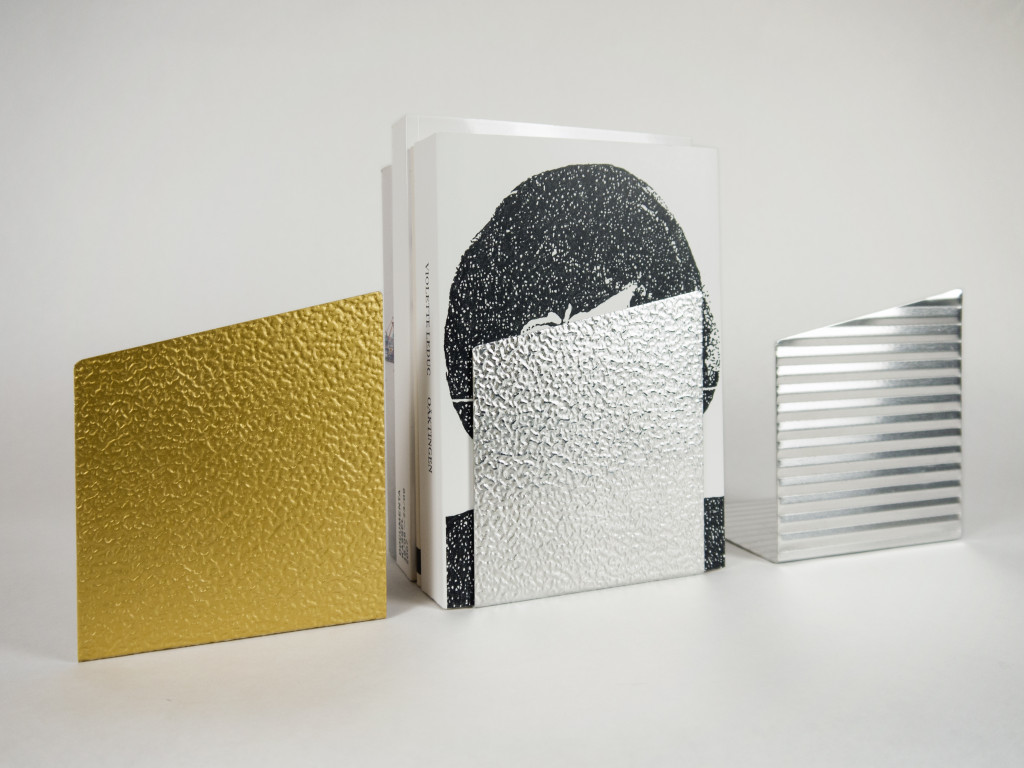 3 to 5 Seconds Bookend
3 to 5 Seconds Bookend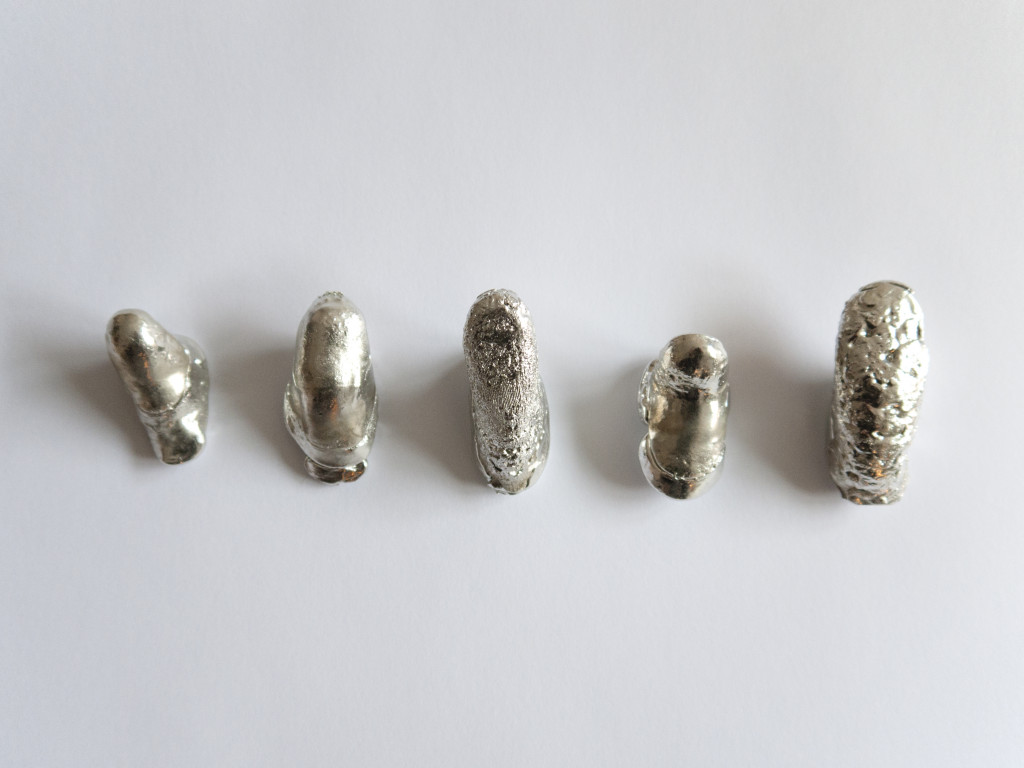 3 to 5 Seconds Hooks from thumb
3 to 5 Seconds Hooks from thumb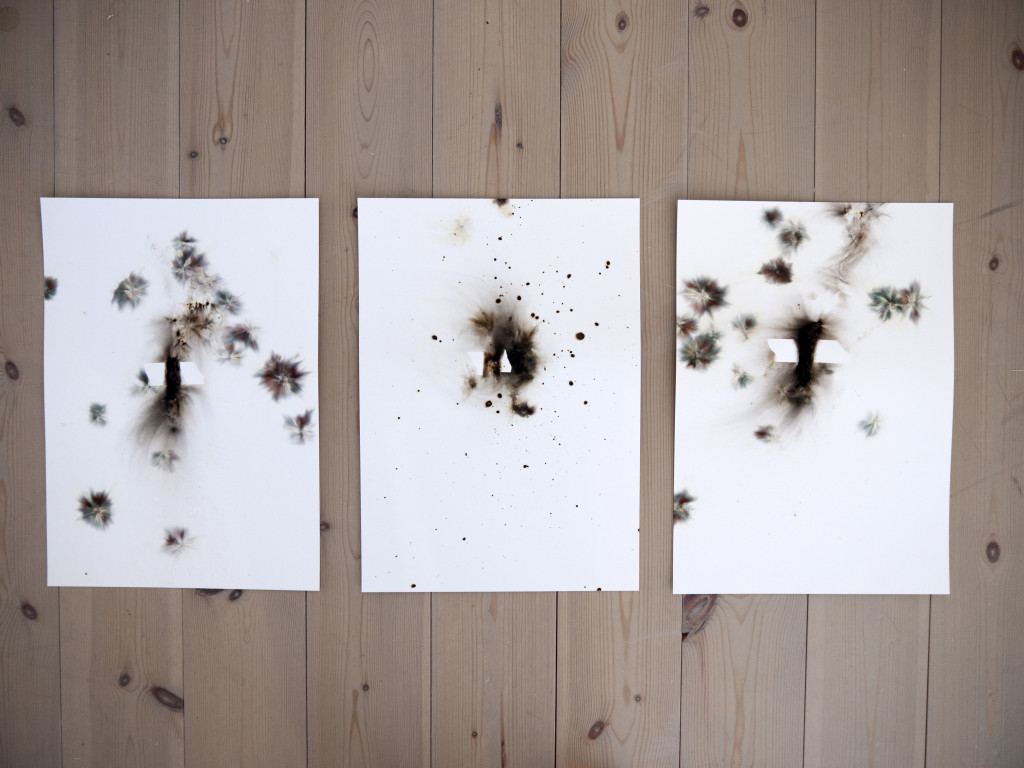 3 to 5 Seconds Explosion poster
3 to 5 Seconds Explosion poster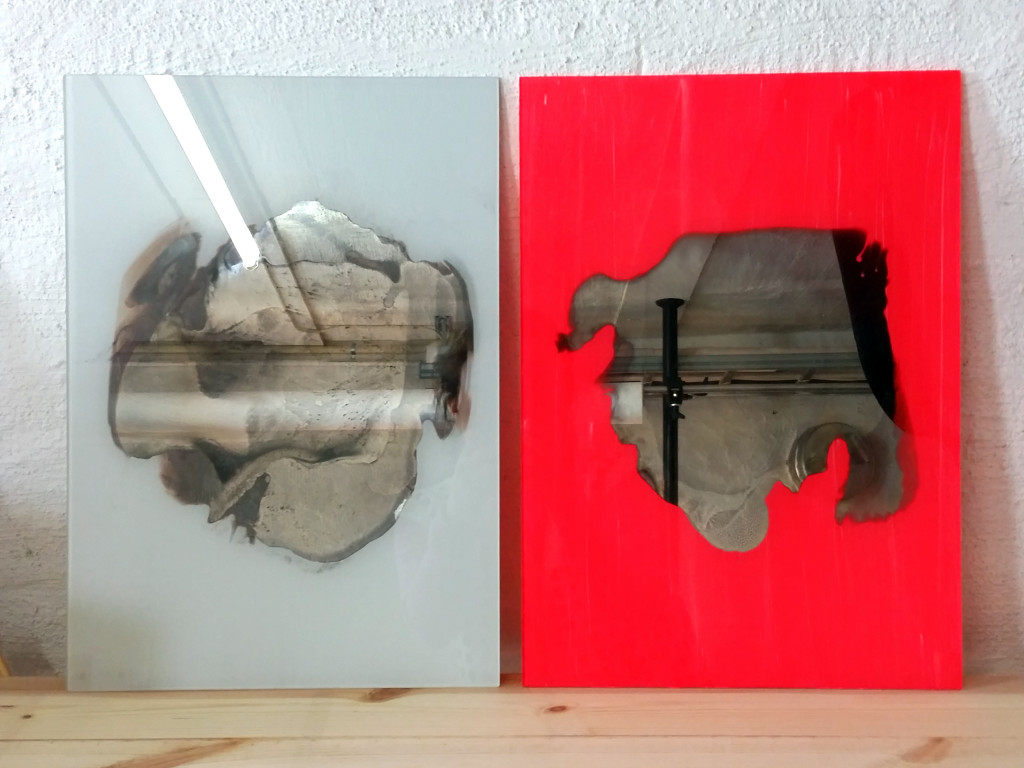 3 to 5 Seconds Mirror with coloured back paint (Light Grey, Computer Beige or Lavender Blue)
3 to 5 Seconds Mirror with coloured back paint (Light Grey, Computer Beige or Lavender Blue)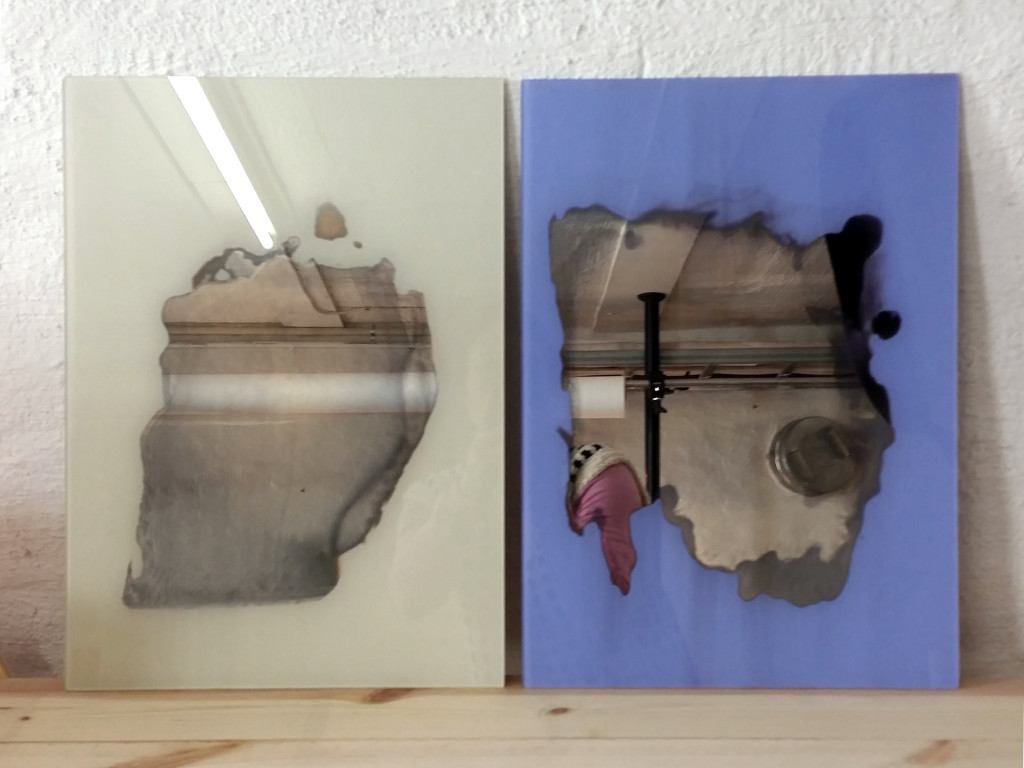 3 to 5 Seconds Mirror with coloured back paint (Light Grey, Computer Beige or Lavender Blue)
3 to 5 Seconds Mirror with coloured back paint (Light Grey, Computer Beige or Lavender Blue)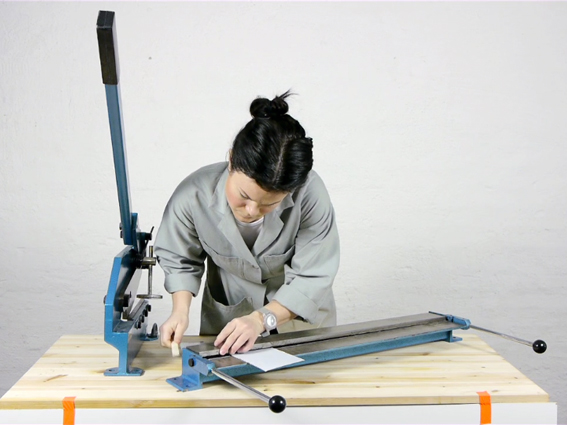
-
3 to 5 Minutes
– Rapid handmade furniture
Is it possible to make unique handmade furniture really fast? Is speed the contradiction to skills? Can lack of time lead to new methods? Is there an aesthetics of the shortcut? Is speed bad?
This project is a continuation of the recent “3 to 5 Seconds – Rapid handmade production” where Jenny Nordberg explored speed in her search for ways to combine different properties of the mass produced and the handmade. This work is like many other of Nordberg’s projects a part of a larger and ongoing work about how we produce and consume today, how we’ve done historically and how it might could be different onwards.
If the first project was about examining speed in a handmade and craft oriented context, this second project is just as much about using speed as a method to achieve new expressions and procedures. The design, materials and details are all the result of the lack of time. For example – the coating does not cover the whole surface, details are few and imperfect, assembly screws are visible and the design is restrained.
“3 to 5 minutes – Rapid handmade furniture” explores the making of furniture by hand under time pressure often to found in mass production. Each piece of furniture must be made within the timespan of tree to five minutes. All production steps are clocked and added together as the designer turns herself into an artisanal assembly line. Materials and components are to be found in regular hardware stores as well as the pre-cutting of the board material. The project includes two easy chairs with additional pillows, a small trolley and a dining table with four chairs, all together made in less than an hour.
An easy chairs with additional pillow an the small trolley together with objects from 3 to 5 Seconds – Rapid handmade production project will be shown at the Stockholm Furniture & Light fair 3-8 February. The whole project including a production setting complemented by a shop will be exhibited in a solo exhibition at Vandalorum 28/2 – 6/4 2015.
Thanks to Kvadrat textiles.
-
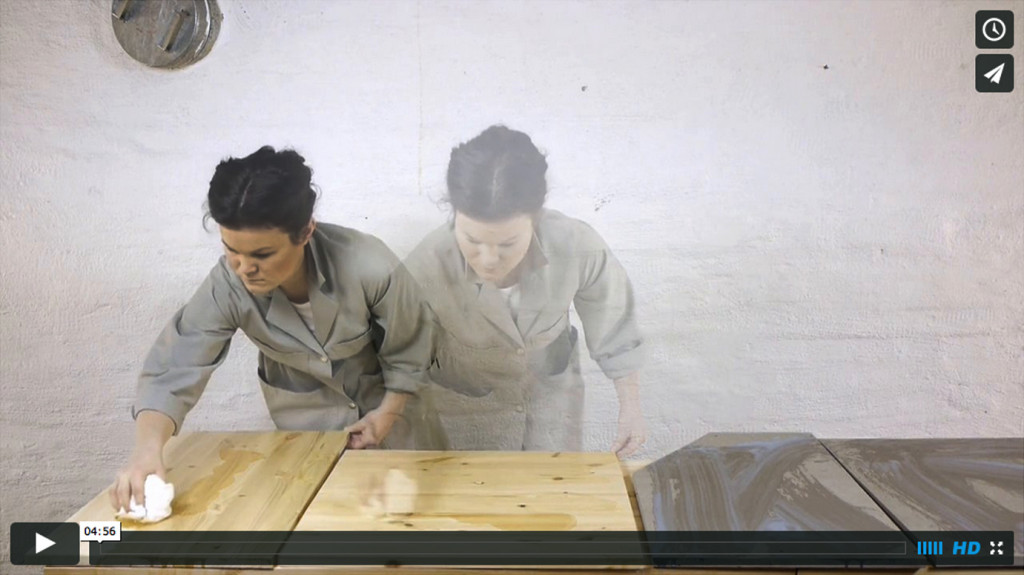
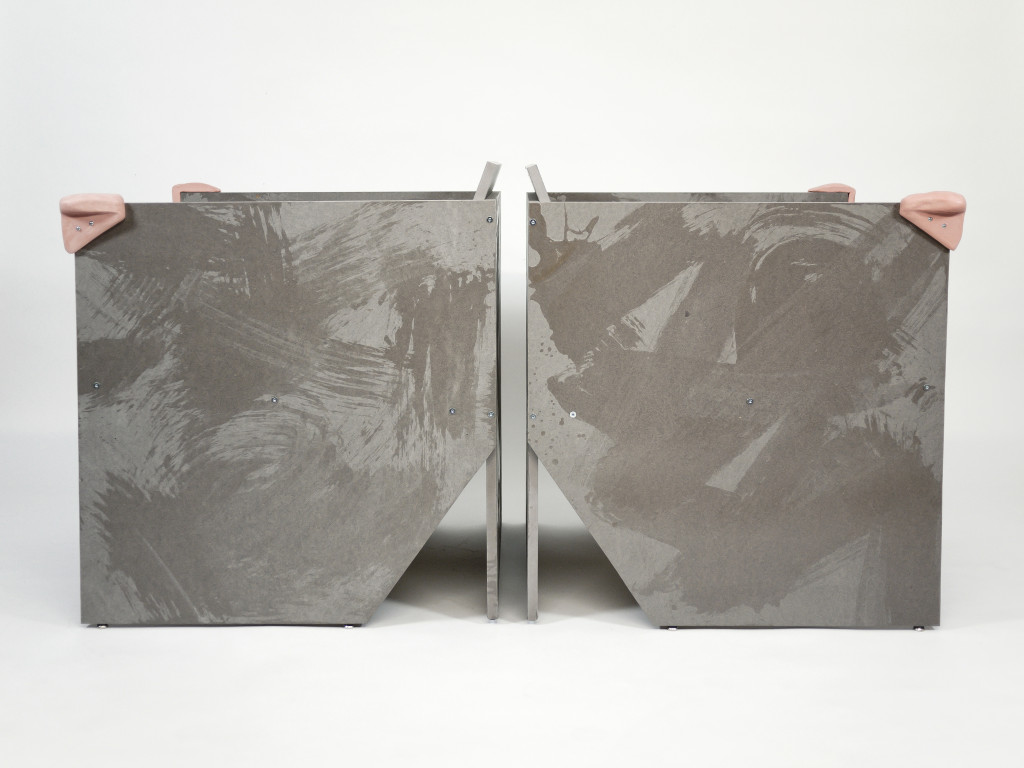
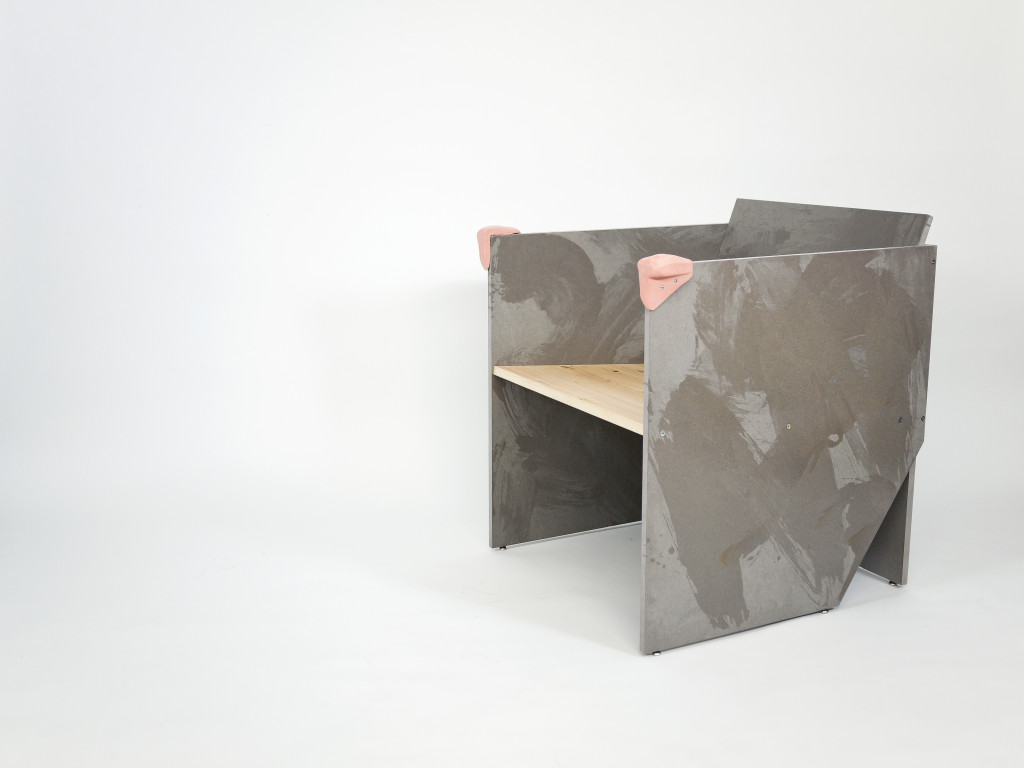
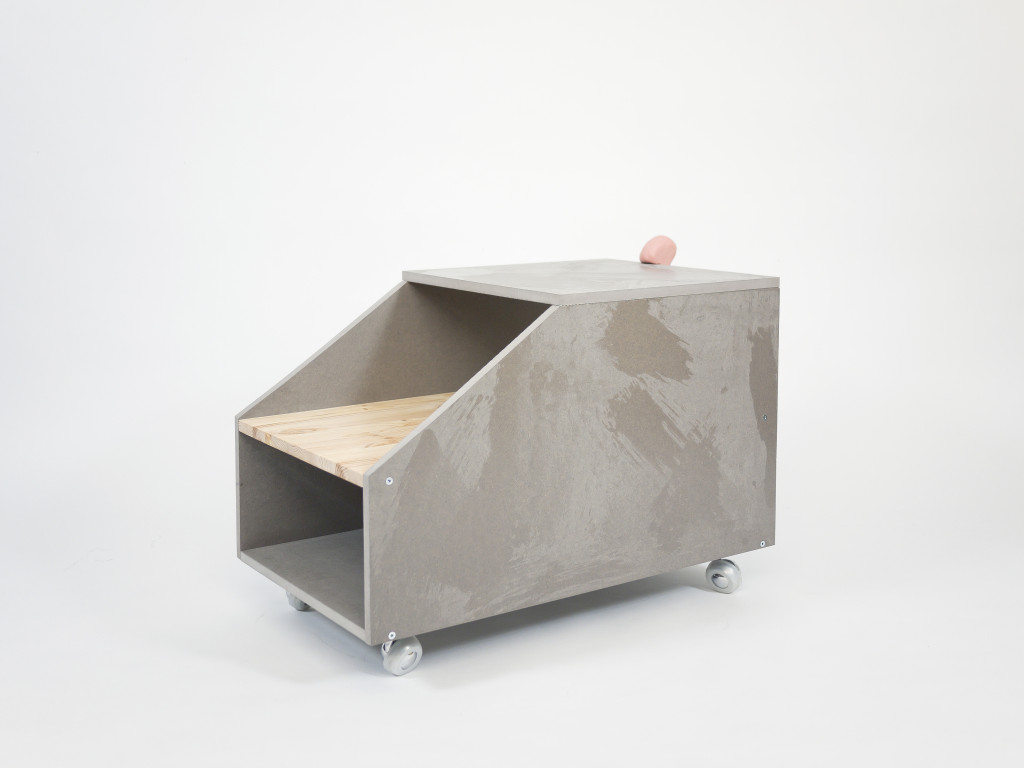

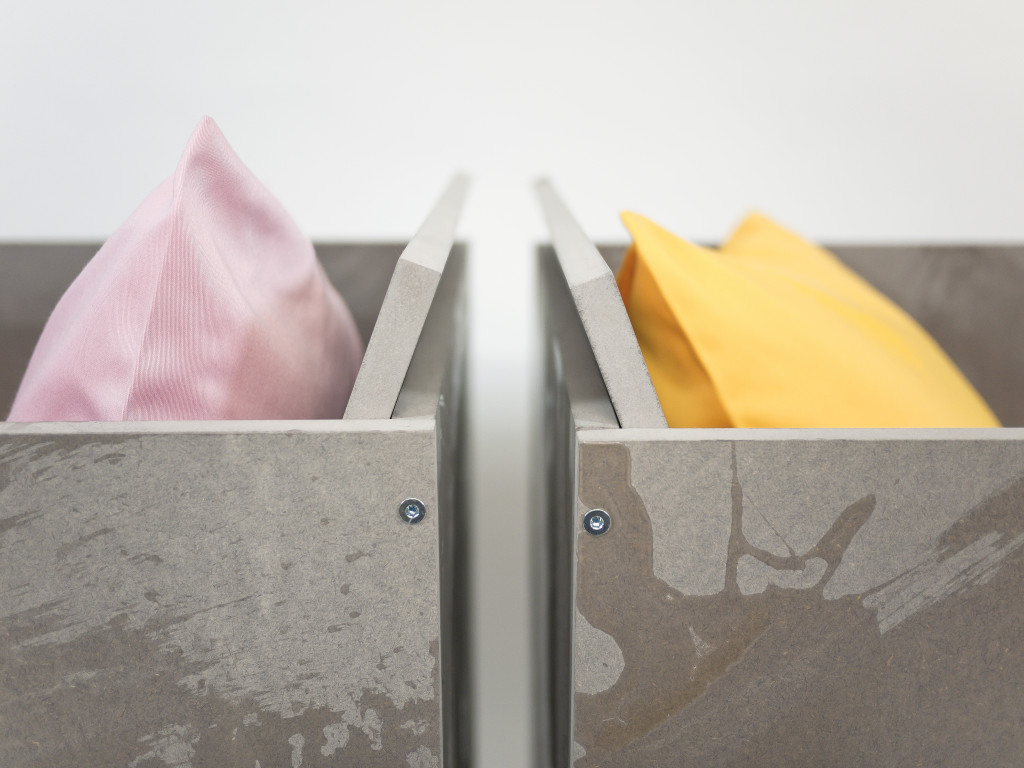
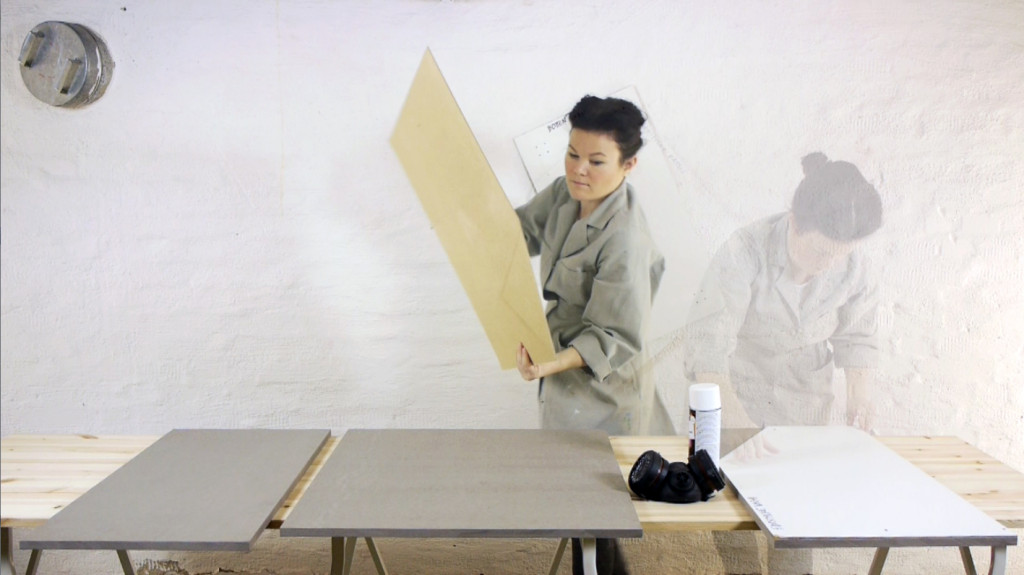 Stencils for drilling and cutting.
Stencils for drilling and cutting.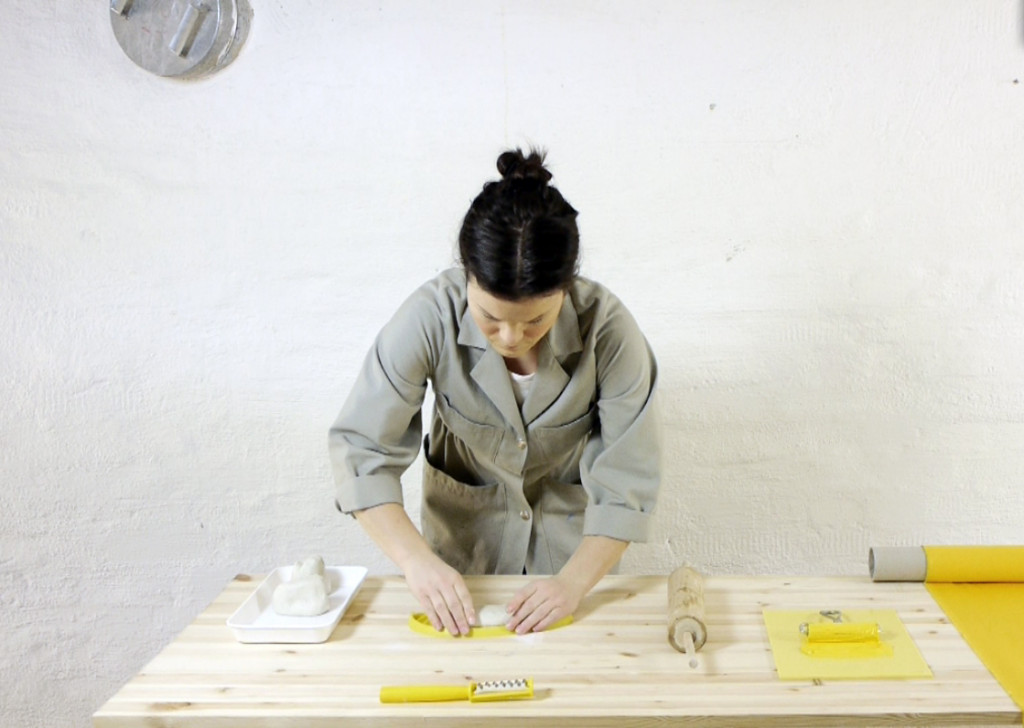 Making clay stamps for printing on fabric.
Making clay stamps for printing on fabric. 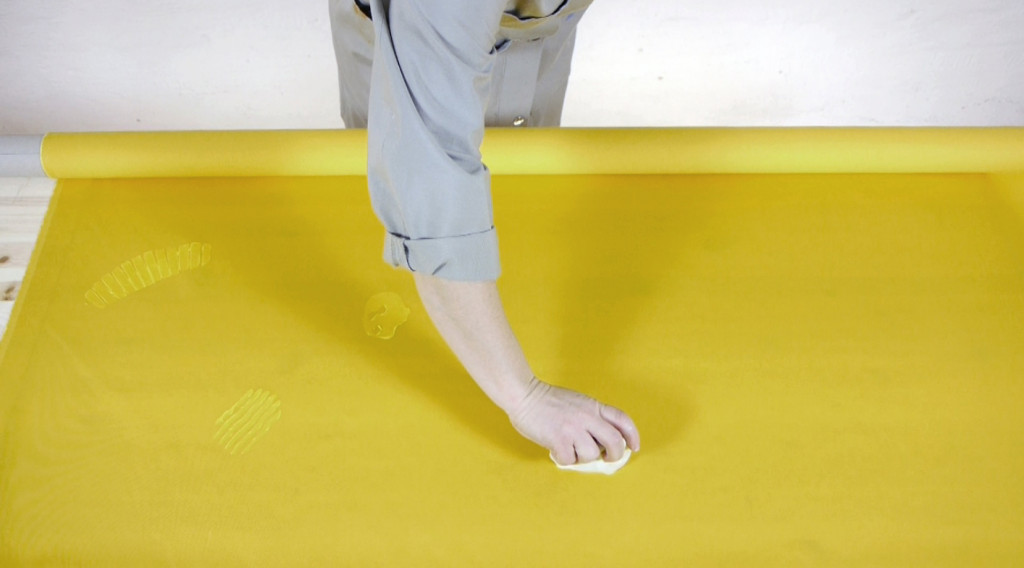
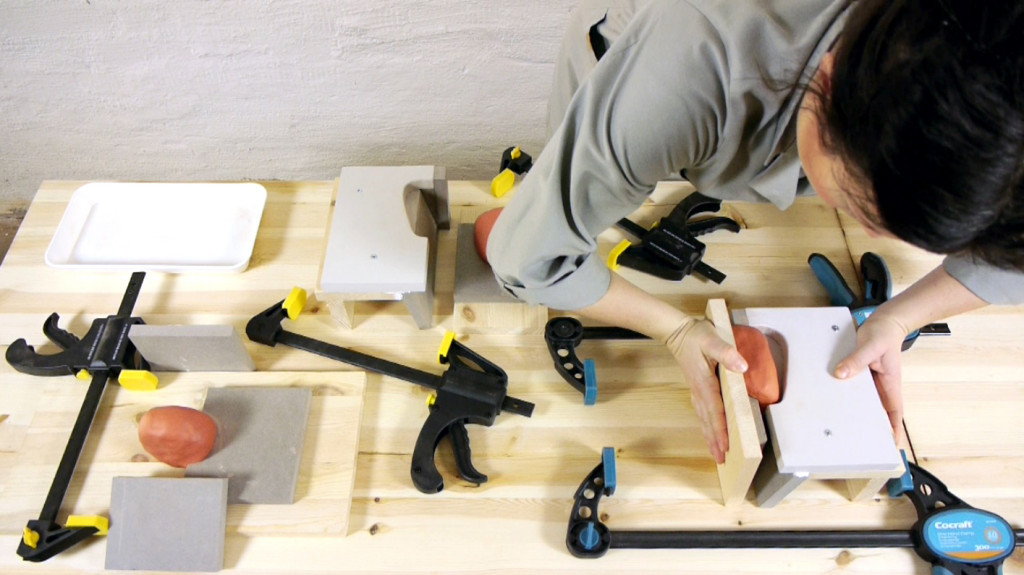 Clay moulds for handles.
Clay moulds for handles.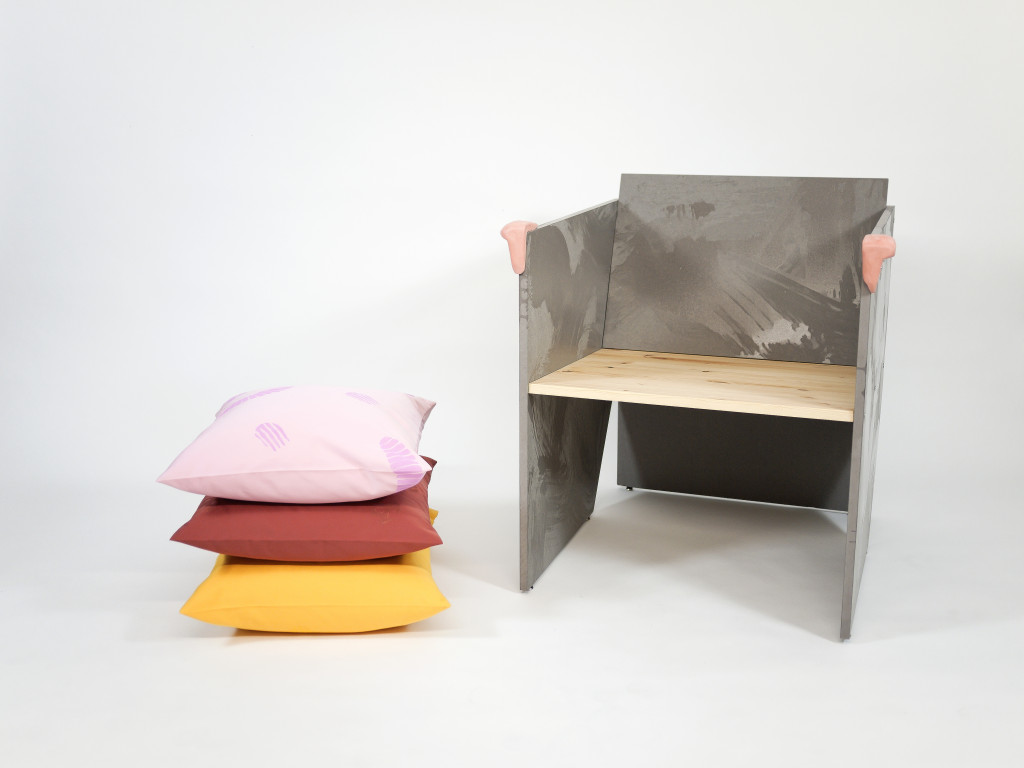
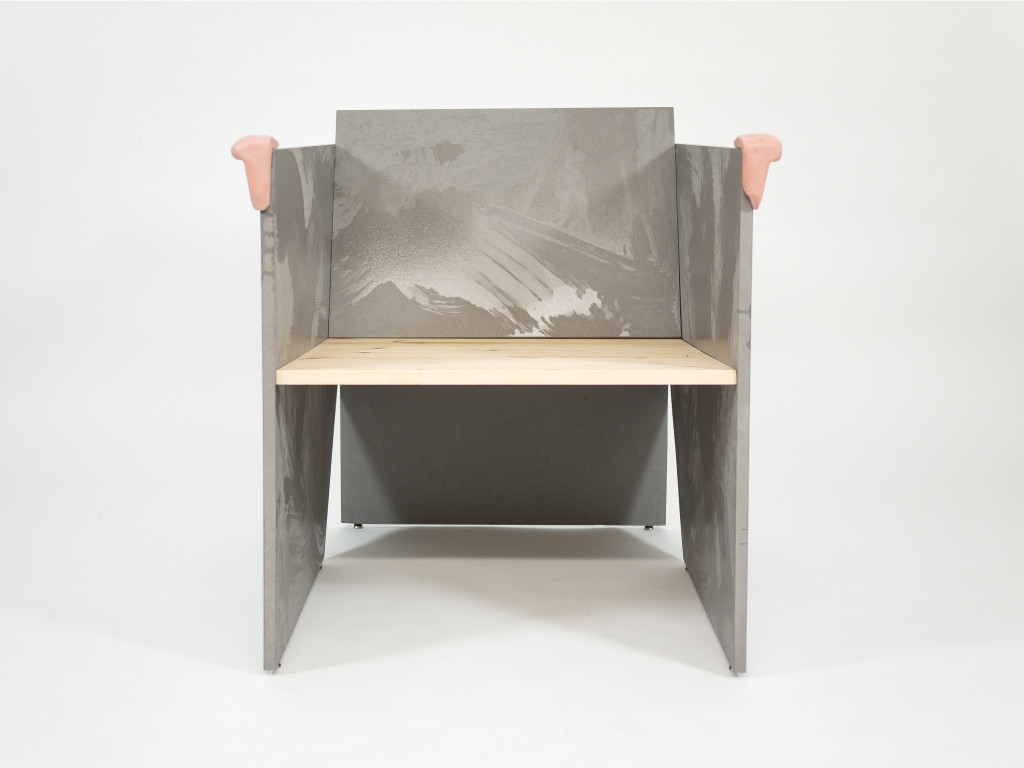
-
Mirrors
While working with the project “ 3 to 5 Seconds – Rapid handmade production” in 2014 Jenny Nordberg researched ancient mirror making. The process and outcome was captivating and Nordberg has since then worked with this old method of making mirrors. The process used has it’s origin in the 19th century and is resulting in a thin layer of silver (Ag) on the glass surface. Not covering the whole surface of the glass, each mirror becomes different due to uncontrollable liquids within the process of making.
-
-
3 to 5 Seconds
– Rapid handmade production
WATCH THE PRODUCTION VIDEO PART II
3 to 5 Seconds is like many other of Jenny Nordberg’s projects part of a larger and ongoing work about how we produce and consume today, how we’ve done historically and how we could do it in the future. In the project 3 to 5 Seconds she examines how different properties from the handmade and mass produced can be combined. 3 to 5 seconds is about bringing together contradictions and hard to achieve qualities. The project combines the uniqueness of the handmade and the speed of the mass produced. Is it possible to make one of a kind handmade items really fast?
The various production methods in the 3 to 5 Seconds project all have in common that every moment should be made within three to five seconds. The project was begun in the summer of 2014 and is continuously ongoing. More objects and processes will be added in onwards. Read more about the three initial production methods below.
Double casting stone (2016)
Clock, jesmonite and lava stoneAxhammer bending (2016)
Pot stand, anodised aluminiumPunch and roll (2016)
Lamp, paper and electrical fittingExplosion graphics (2015)
Walk around the city of Malmö the day after New Years Eve and you will find the ground covered in the remains of fireworks. Jenny Nordberg uses fireworks attached with tape to a thick paper to create unique prints. Different types of fireworks create different looks and colours.Hook from thumb (2015)
By quickly pressing down the thump into wet clay and then pouring melted tin into it a hook is shaped. Every hook is different but holds the same fingerprint.Hand force (2014)
Clay – a classic and slow material with time a consuming process from material to finished object. The clay used in this project is a quick drying ceramic clay that does not require burning, so called study clay. The shape of the candle holder is determined by the hand, force and direction, the entry point of the candle and the original shape of the two lumps of clay.Pour out a puddle (2014)
In the traditional process of making a mirror, Jenny Nordberg eliminated all unnecessary moments and demands for perfection and total coverage. The steps left to achieve a mirror are then left to mixing three liquids, pouring the mixture onto a piece of glass and wait for five minutes. The result is a multi dimensional mirror effect of silver in indefinite puddle shape.Double staining (2014)
The goal of the double staining method is to produce both patterns and several colours in as short time as possible. The effect of dipping a folded piece of cloth in two different dyes and then hang it to dry gives both stripes, a tie dye like pattern effect and three colours with various wash effects.Cut and bend (2014)
By altering diagonal and strait cuts followed by a single bending movement the book ends are shaped. The material is aluminium, all ready precut stripes from the local hardware store, with different textures and coatings.Items from the 3 to 5 Seconds project can be bought at Center of Commerce.
3 to 5 seconds är som många andra av Jenny Nordbergs projekt en del av det större och fortlöpande arbete som handlar om hur vi producerar och konsumerar idag, hur vi gjort historiskt och hur vi skulle kunna göra framöver. I projektet 3 to 5 seconds undersöker hon hur olika egenskaper från det handgjorda och det massproducerade kan kombineras. 3 to 5 seconds handlar om att föra ihop motsägelser och svåruppnådda egenskaper. Projektet kombinerar det unika i det handgjorda och det snabba i det massproducerade. Går det att göra unika handgjorda objekt skitfort?
Gemensamt för de olika produktionsmetoderna i projektet 3 to 5 seconds är att varje moment ska ligga på en produktionstid mellan tre till fem sekunder. Projektet tog sin början under sommaren 2014 kommer att pågå framöver. Fler objekt och processer kommer att tillkomma framöver. Initialt har tre produktionsmetoder skapats, läs mer om varje nedan.
Handkraft
Lera, ett klassiskt och långsamt material med tidskrävande process från material till färdigt objekt. Leran använd i detta projekt är en snabbtorkande keramisk lera som inte kräver bränning, så kallad studielera. Ljusstakens form bestäms av handen, kraften och riktningen, ljusets isättningspunkt samt de båda lerklumparnas ursprungsform.Hälla ut en pöl
I den traditionella processen att göra en spegel har Jenny Nordberg eliminerat alla umbärliga moment samt krav på perfektion och totalt täckningsområde. Kvar för att få en spegel är då kvar att blanda tre vätskor, hälla ut blandningen på en glasskiva och vänta i fem minuter. Resultatet är en flerdimensionell spegeleffekt av silver i obestämbar pölform.Dubbelinfärgning
Målet med dubbelinfärgningsmetoden är att på textil framställa både mönster och flera färger på kortats möjliga tid. Effekten av att doppa ett vikt tygstycke i två olika färgbad och sedan hänga upp det på tork ger både ränder, en batikliknande mönstereffekt samt tre kulörer med diverse laverande effekter sinsemellan.Klipp och bock (2014)
Materialet är färdigklippta aluminiumbitarna med olika stuktur och ytinfärgningar som kommer från den lokala byggvaruhandeln. Bokstöden får sin form genom att diagonala och raka klipp alterneras och sedan efterföljs av en bockning.Explosionsgrafik (2015)
Gå runt i Malmö dagen efter nyårsafton och marken är täckt av resterna från fyrverkerier och smällare. Jenny Nordberg använder smällare fästa med tejp på entt tjockt papper för att skapa unika tryck. Olika typer av smällare och fyrverkerier genererar olika utseenden och färger.Krok av tumme (2015)
Genom att snabbt trycka ner tummen i våt lera och sedan hälla smält tenn i formas en krok. Varje krok är unik men har samma fingeravtryck.Objekt från 3 to 5 Seconds-projektet kan köpas på Center of Commerce.
-
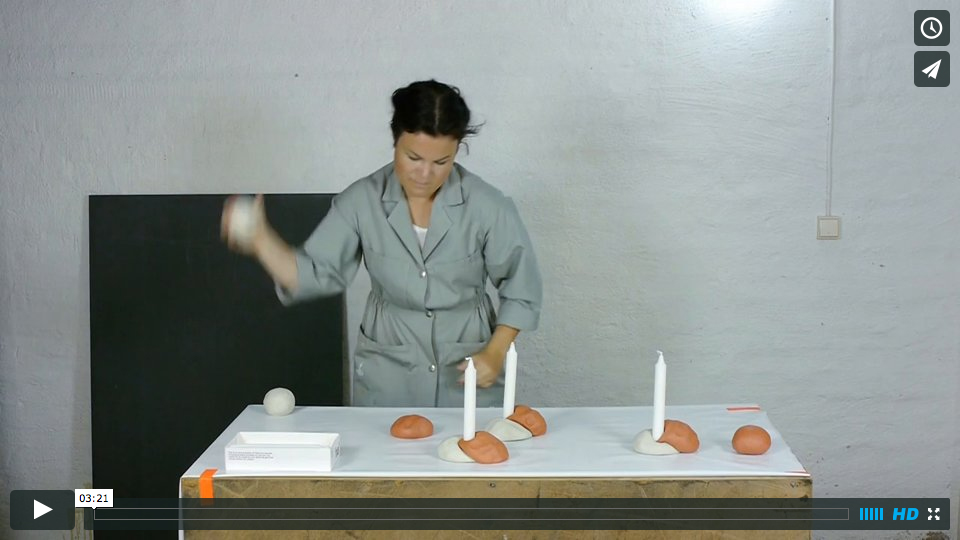

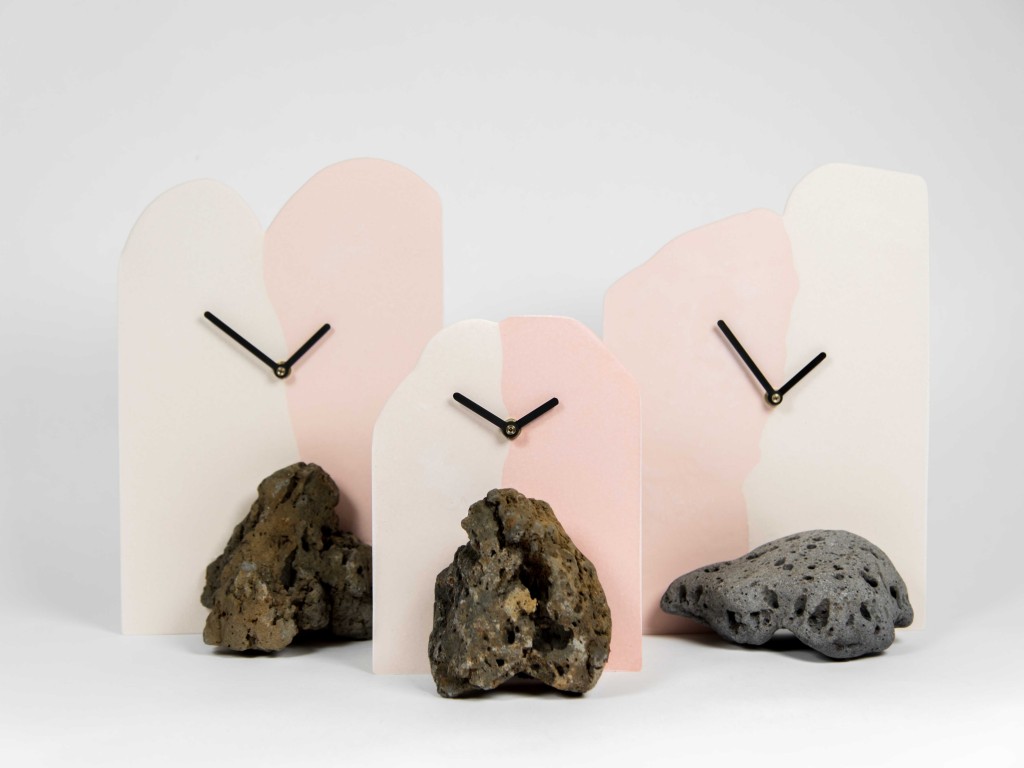 Double casted lava stone clocks
Double casted lava stone clocks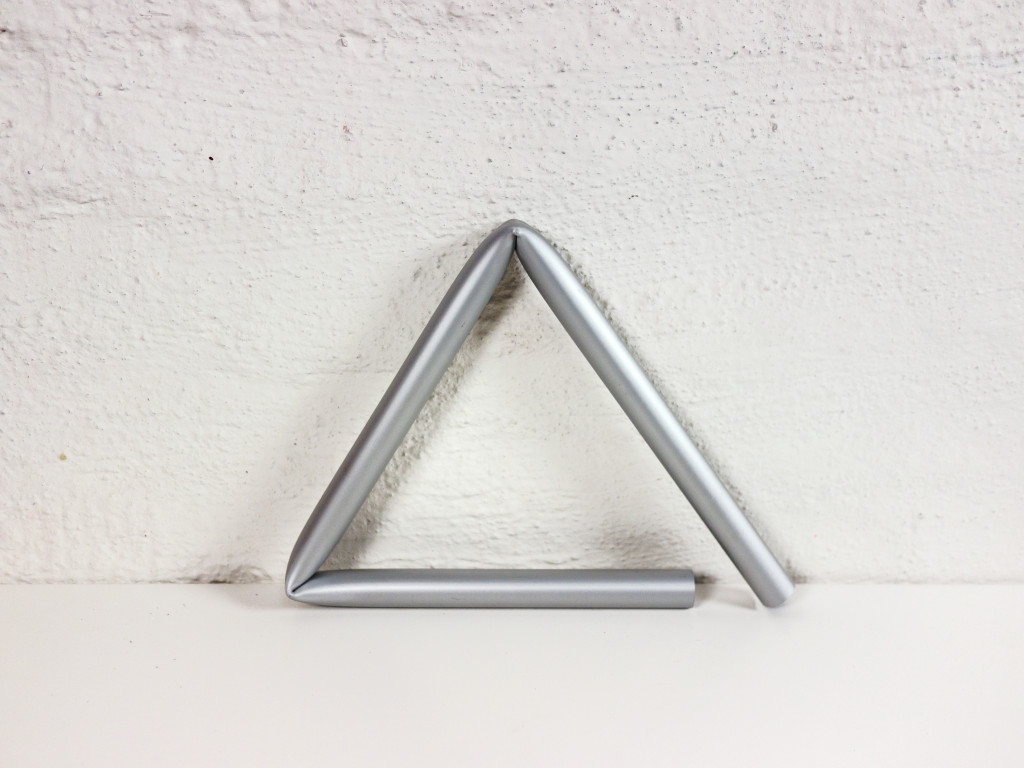 Axhammer bended trivet
Axhammer bended trivet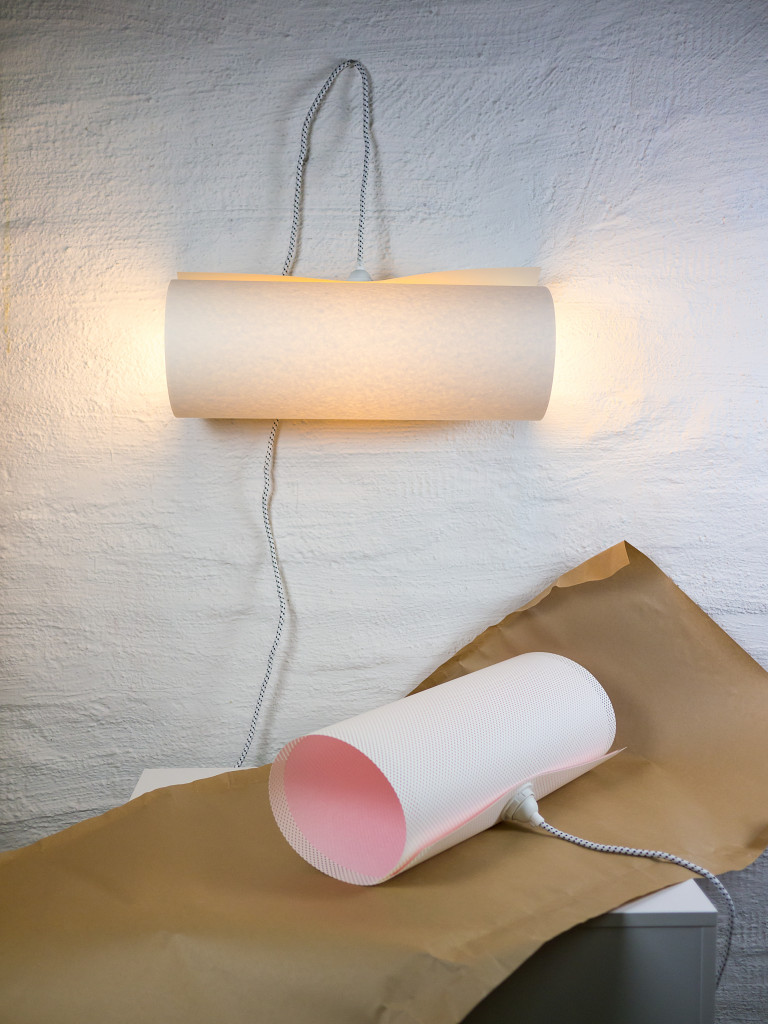 Punched lamps
Punched lamps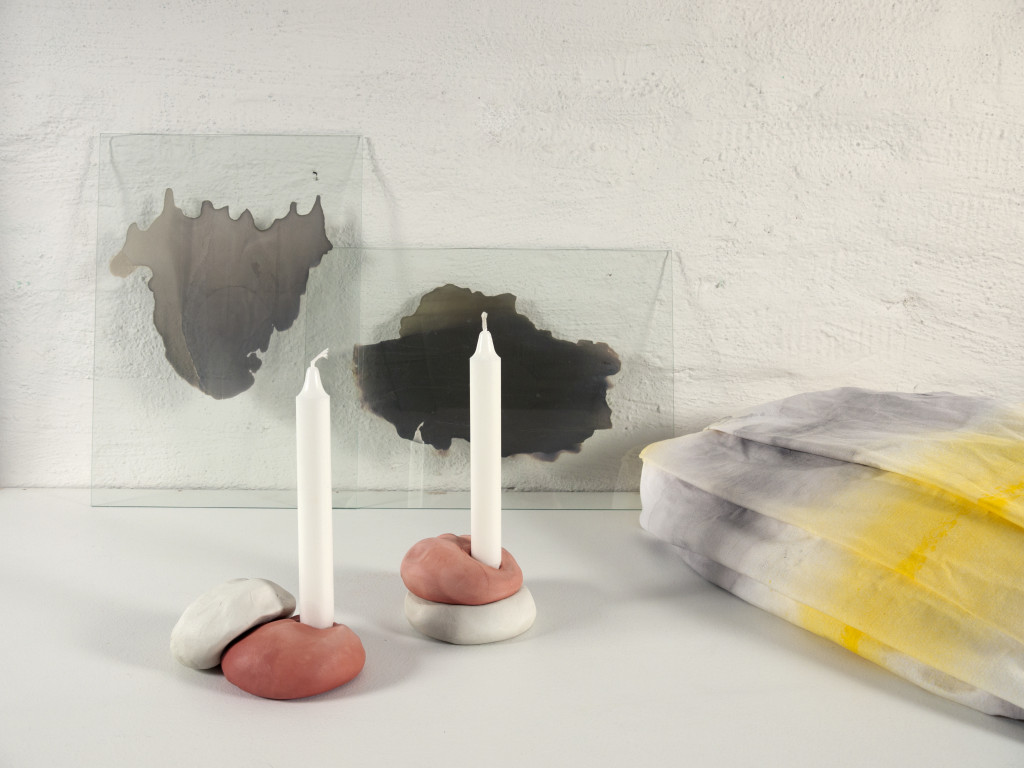
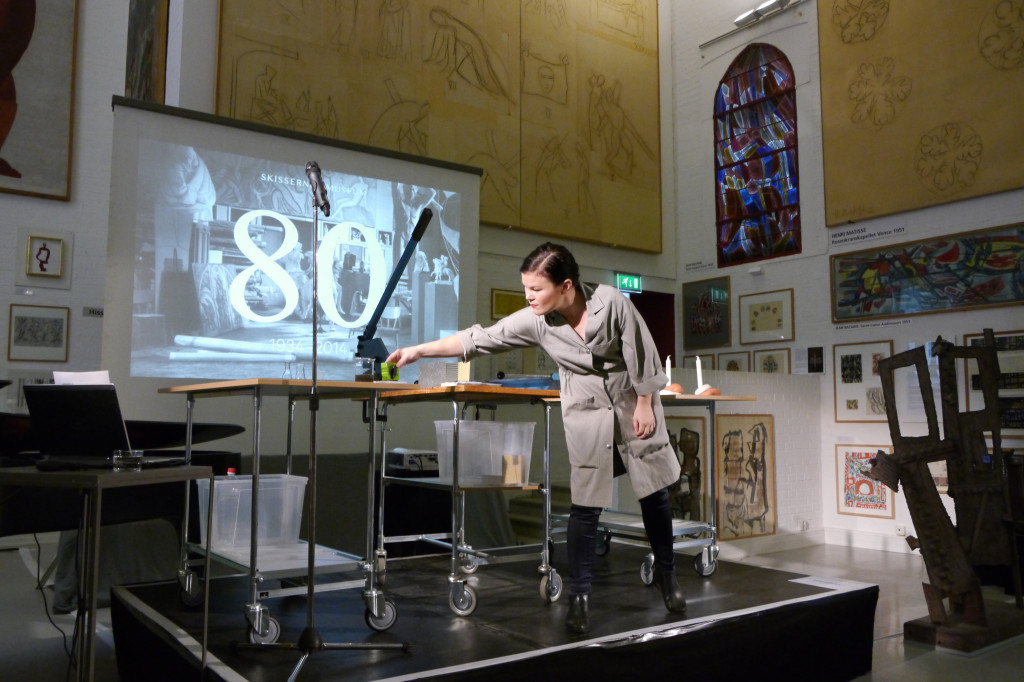 Performance at Skissernas Museum.
Performance at Skissernas Museum.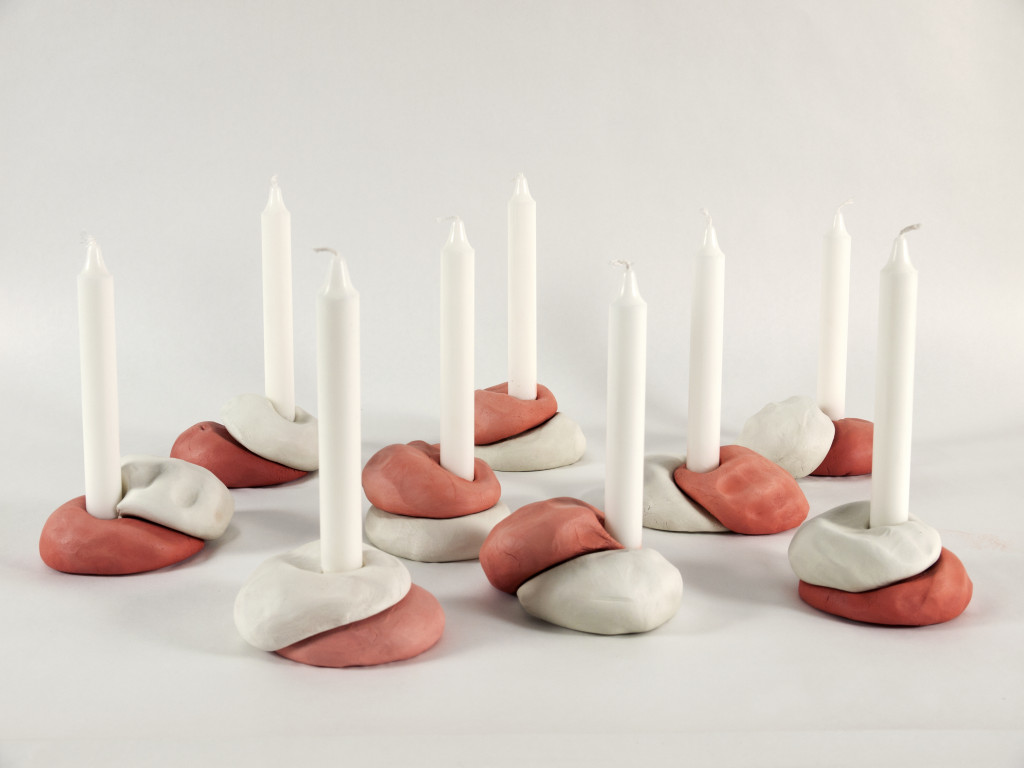 Hand force candle holders
Hand force candle holders 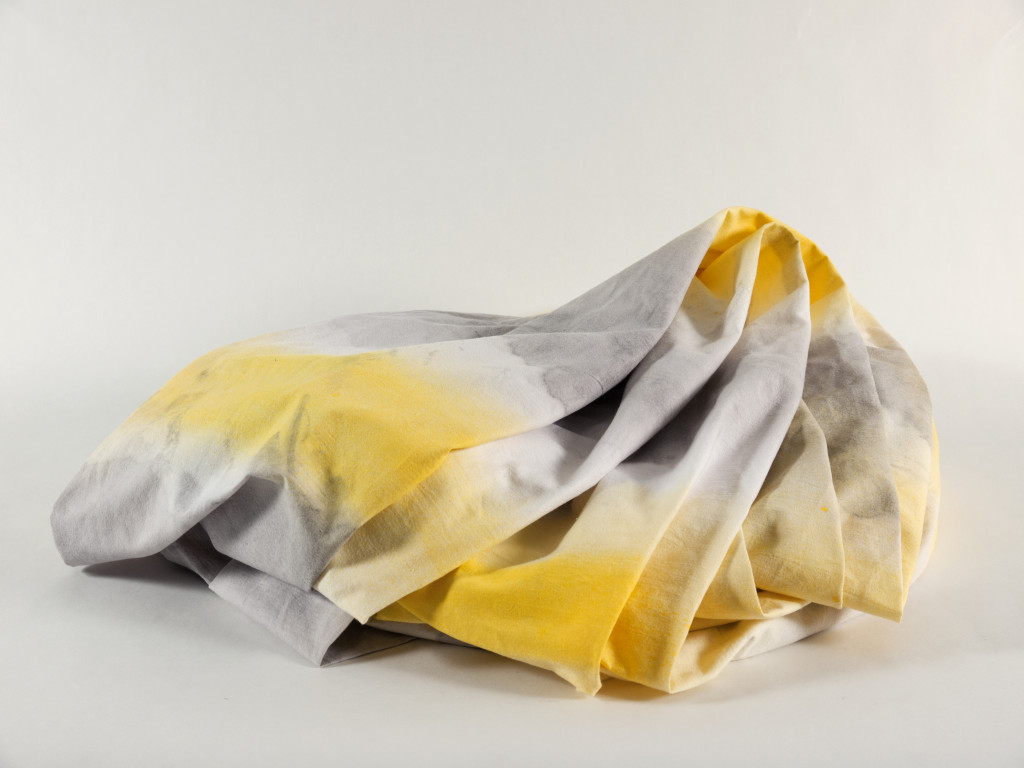 Double staining fabric
Double staining fabric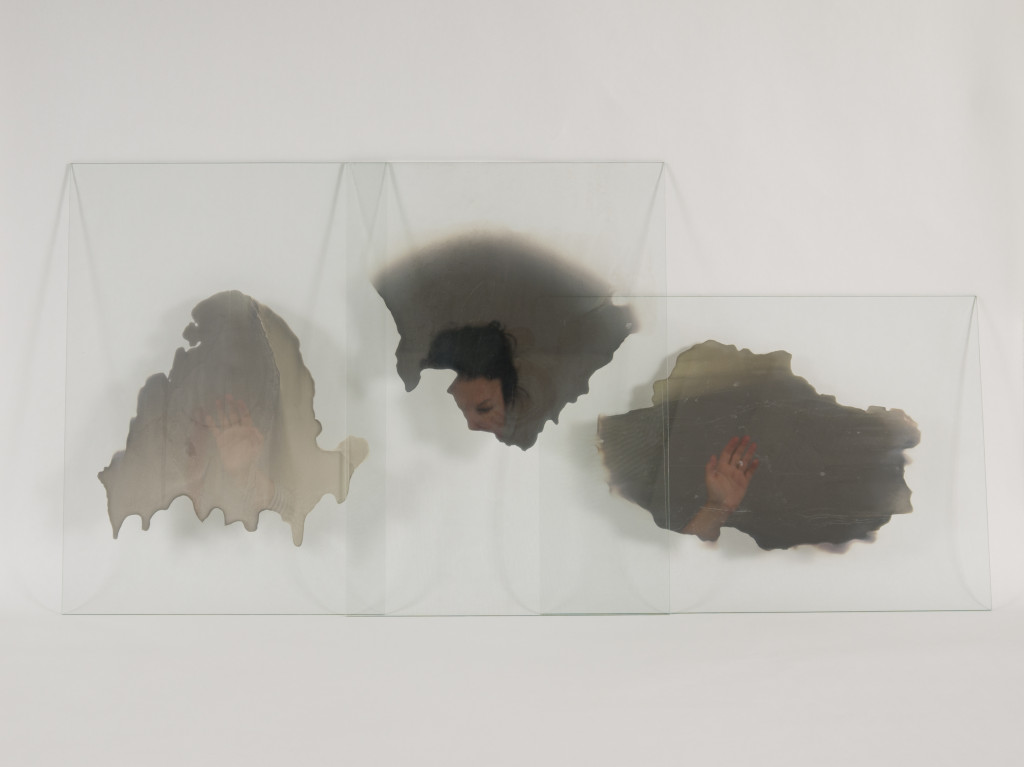 Pour out a puddle mirrors
Pour out a puddle mirrors Cut and bend book ends
Cut and bend book ends Explosion graphics poster
Explosion graphics poster Hook from thumb
Hook from thumb
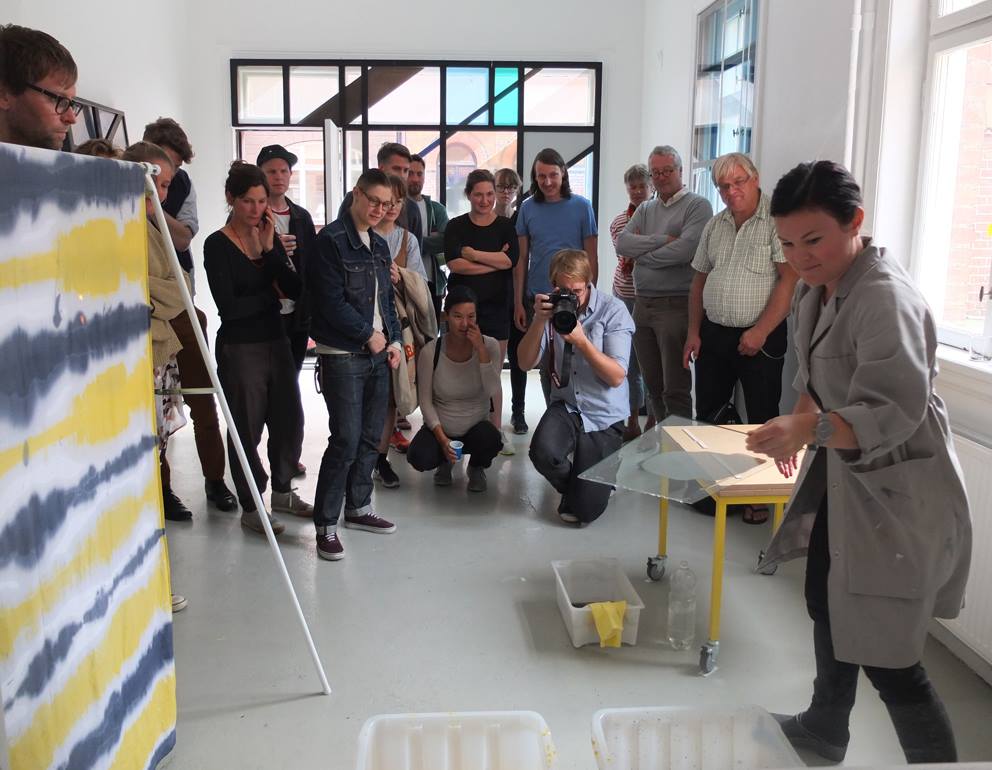 Performance at Krets Gallery
Performance at Krets Gallery
-
Omkompositioner
Text by Jenny Nordberg from the Exhibition at Falkenberg Museum >>>
ABOUT THE EXHIBITION
What does today’s patterns of consumption look like in relation to history and to the future? In the exhibition Recompositions at Falkenberg Museum industrial designer Jenny Nordberg works with rejected furniture from a reversed value perspective where she sees the furniture as a supply of material. During the exhibition she takes them apart, and from the pieces she creates new objects which have new function and meaning. During week 11 – 13 every Thursday and Saturday, and Wednesdays on uneven week numbers, Jenny Nordberg is present in the exhibition’s temporary workshop. You are welcome to visit her for conversation and inspiration!In parallel with this exhibition runs the exhibition Finn Juhl – a Danish Design Icon on the first floor of the museum. Many of Finn Juhl’s pieces of furniture have today reached the status of what we call “design classics”. But what happens with all the rest? Furniture that does not reach the status of design classic or for other reasons are not saved and preserved? Most pieces of furniture and objects produced and consumed belong in this category, consequently are not design classics. We live in an age of consumerism – objects and furniture are consumed in large numbers and at a high pace. Much of that furniture is soon discarded and quickly regarded as waste. Few objects are inherited or are seen as an investment which would have given them a longer life. Many of the pieces of furniture produced today even have a built-in expiration date, a planned aging of sorts. Most of what we do not longer want to keep end up at the dump, or in best case at an auction site or in a second hand store. Some pieces of furniture and objects not even second hand stores want to accept.
Most of the time carpets and large tables are rejected since they are so hard to sell. But what is rejected and unwanted can be seen as a resource – as one huge supply of material, instead of being regarded as waste. By bringing in the rejected pieces of furniture into a new context they are suddenly no longer waste but are transformed into something to be desired – they have found their place. For this reason industrial designer Jenny Nordberg wants to collect this “waste”. These rejected objects which can have a new life and become new artifacts through relocation, disassembly and recrafting. A public call has been made ahead of the exhibition. The museum has asked for unwanted pieces of furniture and objects, especially large tables, carpets and various wooden objects. As soon as the furniture arrives at the museum and enters the exhibition space, it ceases to exist as furniture and Jenny Nordberg sees it only as a supply of material. The tables are categorised as “boards”. Carpets of various kinds fall into the category “textiles”. Those are two classical kinds of material to start from. Small wooden objects are also hard to sell. Turned wooden bowls, wooden trolls, and stained wooden candle sticks do not seem to be the most sought after objects by thrift store customers. These small objects can be seen as details and components.
The exhibition Recompositions – Furniture Recompositions by Jenny Nordberg is divided into three phases.
Set-up. This phase consists of the construction of a temporary workshop and collection of unwanted objects which will become a supply of material. Also, Agape and Brohjälpen have donated furniture they have not been able to sell. Workshop. In the temporary workshop the supply of material is transformed into new objects through the use of the concept “recomposition” and various surface treatment techniques, among others Allmoge Quick Fix. Here designer Jenny Nordberg also takes help from FAMI which is the municipality of Falkenberg’s labour market and introduction unit. FAMI helps out with sewing and woodwork. Gallery. The temporary workshop is packed away and the finished objects which have gone from unwanted artifacts to new furniture are put on display.ABOUT RECOMPOSITIONS
The name of the exhibition is also the name of the concept for transformation Jenny Nordberg has developed. A kind of furniture reconstruction which shows how old furniture and objects can be seen as a supply of material and become new artefacts.
The challenge is as hard as it is enjoyable. To plan a transformation without knowing what is being transformed. Working with old unwanted furniture as a supply of material is a whole different thing compared to going to the timber yard. But that is what makes the challenge enjoyable and just that – challenging. In order to avoid being completely unprepared Jenny Nordberg developed a transformation concept that is applicable to most kinds of furniture. This transformation concept she calls Recompositions. To put it simply the Recomposition concept is about taking rejected furniture and objects we do not longer want and divide them into smaller parts – building blocks. Then they are composed into new objects. A kind of reconstruction. During the course of the exhibition Jenny works in a temporary workshop set up in the exhibition space. Here she demonstrates how the rejected objects can become new ones through recomposition. Here she also takes help from carpenters and seamstresses from FAMI which is the municipality of Falkenberg’s labour market and introduction unit. The Recomposition concept is tried out at a small scale in this exhibition and the result will be unique objects. But would it also be possible to try out this way of thinking and this method of working at a larger, more commercial scale?ABOUT WASTE
To see rejected furniture as a potential supply of material instead of unwanted objects which in reality are trash still feels urgent and important. It is a way of viewing waste that is in line with British anthropologist Mary Douglas’ idea about “matter out of place”, a concept she brought forth already in the late 1960’s in the text Purity and Danger – An Analysis of the Concept of Pollution and Taboo. Matter out of place is thus about trash not being trash but rather objects out of place.
As an example of objects out of place we can consider leaves and other natural elements. They are seen as perfectly obvious in nature but they are instead seen as trash if they end up on a living room floor. Or take a sandwich for example: When you hold it in your hand it is food, but if you drop it on the sidewalk it is transformed into trash. Is there anything that exists only as trash? Of course it is not as easy as saying we do not have trash but only objects out of place. Also, it is the overall amount of trash that is much too large. According to Naturvårdsverket an average Swede needs to lower her or his consumption to a fifth in order to live a sustainable life in a global perspective. Also interesting is the fact that waste is a relatively modern phenomenon. 150 years ago we hardly had any trash at all, all materials were part of different flows and exchanges, or were recycled. According to SIFO, in 2010 Swedes bought interior decoration, furniture and textiles for 21 billion Swedish Crowns. That almost equaled the amount spent on food (25 billion Swedish Crowns). The same year the average Swede generated 429 kg of trash, according to Naturvårdsverket. In the early 1900’s this figure was 25 kg per person and year. In 2012 the amount of waste had risen to 460 kg. It is hard to get information on how large amount of that number consists of furniture and similar objects. Also it would not reflect reality since only part of that amount of furniture is discarded. The rest is resold through the second hand market and some is given to thrift shops. But what we do know, is that there is more furniture than what we want and need.ABOUT ALLMOGE QUICK FIX
During the workshop phase of the exhibition designer Jenny Nordberg will use various techniques for surface treatment. Techniques with different expressions for making old surfaces new and to function as a decorative element. One of the techniques is Allmoge Quick Fix which Jenny Nordberg developed in 2006.
During 2006 Jenny worked with several projects about things and phenomena she disliked. By exposing herself to her “dislikes” and instead making them hers the negative relation could be broken. Folk art (“allmoge” in Swedish) objects was one of her dislikes that was changed into enjoyment. Strictly intellectually Jenny Nordberg realised she should like folk art but was really reluctant to doing that. The break-through, or the turn, came when Jenny saw an episode of the TV show The Antiques Road Show, where expert Knut Knutsson virtually hits the ceiling over an old folk art cupboard. What he liked most was how the different layers of colour shone through where the cupboard was particularly worn. The signs of use and wear was something Jenny Nordberg also fell for. She commenced experiments to get the same kind of expression, but a lot quicker than through natural ware. At the 2007 Milan Furniture Show she showed a series of stools which had been décor painted in the technique she developed and that she calls Allmoge Quick Fix. Apart from Allmoge Quick Fix Jenny will use various shadings and colour transitions, painted-on patterns and simple prints, and three-dimensional surface effects.Text av Jenny Nordberg från utställningen på Falkenbergs Museum >>>
OM UTSTÄLLNINGEN
Hur ser dagens konsumtionsmönster ut i förhållande till historien och framtiden? I utställningen Omkompositioner på Falkenbergs Museum jobbar industridesignern Jenny Nordberg med ratade möbler utifrån ett omvänt värdeperspektiv där hon ser möblerna som en materialresurs. Under utställningens gång plockar hon isär dem och av delarna skapar hon nya föremål med ny funktion och betydelse. Varje torsdag och lördag, samt onsdag ojämna veckor, under veckorna 11-13 finns Jenny Nordberg på plats i utställningens temporära verkstad. Besök henne gärna då för samtal och inspiration!Parallellt med denna utställning löper på plan två utställningen Fin Juhl – en dansk designikon. Många av hans möbler är vad vi idag kallar för designklassiker. Men vad händer med allt det andra? Möblerna som inte når designklassikerstatus eller av andra skäl sparas och bevaras? De allra flesta möbler och objekt som produceras och konsumeras tillhör denna kategori, alltså icke designklassiker. Idag lever vi i en tid av konsumism, saker och möbler konsumeras i stor mängd och i snabb takt. Många av dessa möbler blir fort ratade och klassas snabbt som skräp. Det är få objekt som ärvs eller ses som en investering och som därmed får leva ett längre liv. Många av de möbler som produceras idag har till och med ett inbyggt bäst-före-datum, ett slags planerat åldrande. Av allt det som vi inte längre vill ha hamnar det mesta på tippen eller i bästa fall på någon nätbaserad försäljningstjänst eller i en second hand butik. Vissa möbler och objekt vill inte ens second hand butikerna ta emot. Det är ofta mattor och stora bord som de tackar nej till eftersom de är svåra att avyttra. Men, det ratade och oönskade går att se som en resurs, som ett enda stort materialförråd, i stället för att klassas som skräp. Genom att ta in de oönskade möblerna i ett nytt sammanhang blir det plötsligt inte längre skräp utan förvandlas till något önskat – de har funnit sin plats. Av denna anledning vill industridesigner Jenny Nordberg samla in just detta “skräp”. Dessa oönskade ting som via omplacering, nedmontering och återuppbyggnad kan få ett nytt liv och bli till nya objekt. Inför utställningen har ett upprop gått ut. Museet har efterlyst oönskade möbler och prylar, speciellt stora bord, mattor och diverse träobjekt. Så fort möblerna kommit in på museet och utställningsrummet slutar de att vara möbler och Jenny Nordberg ser dem enbart som ett materialförråd. Borden hamnar i kategorin skivmaterial. Mattor av olika slag hamnar i kategorin textil. Två klassiska typer av material att utgå från. Även små träobjekt är svårsålda. Svarvade skålar, trätroll och betsade ljusstakar verkar inte vara det loppiskunderna är mest ute efter. Dessa små objekt kan ses som detaljer och komponenter.
Utställningen Omkompositioner – möbelrekonstruktion av Jenny Nordberg är indelad i tre faser. Uppbyggnad. Denna fas består av uppbyggnad av en temporär verkstad samt insamling av oönskade objekt som sedan blir ett materialförråd. Även Agape och Brohjälpen har donerat möbler som de ej lyckats sälja. Verkstad. I den temporära verkstaden förvandlas materialförrådet via konceptet omkomposition och olika ytbehandlingstekniker, bland annat Allmoge Quick Fix, till nya objekt. Här har designer Jenny Nordberg också hjälp av FAMI som är Falkenbergs kommuns arbetsmarknads- och introduktionsenhet. FAMI hjälper till med sömnad och snickeriarbeten. Galleri. Den temporära verkstaden flyttas undan och de färdiga objekten som gått från oönskade artefakter till nya möbler och objekt visas upp.
OM OMKOMPOSITION
Namnet på utställningen är också namnet på det förvandlingskoncept Jenny Nordberg utvecklat. En slags möbelrekonstruktion, som visar hur gamla möbler och objekt kan ses som en materialresurs och bli till nya artefakter. Utmaningen är lika svår som rolig. Att i förväg planera en förvandling utan att veta vad det är som ska förvandlas. Att jobba med gamla oönskade möbler som materialförråd skiljer sig helt från att gå till brädgården. Men det är också det som gör utmaningen kul och just utmanande. För att inte stå helt oförberedd utvecklade Jenny Nordberg ett Förvandlingskoncept som går att applicera på de flesta typer av möbler. Förvanligskonceptet kallar hon Omkomposition. Enkelt förklarat går konceptet för omkomposition ut på att ratade möbler och objekt som vi inte längre vill ha delas upp i mindre delar – byggstenar. Därefter komponeras de ihop till nya objekt. En slags rekonstruktion. Under utställningens gång arbetar Jenny i en temporär verkstad som byggts upp i utställningsrummet. Här visar hon hur de oönskade objekten via omkomposition kan bli till nya. Till sin hjälp har hon också snickare och sömmerskor på FAMI som är Falkenbergs kommuns arbetsmarknads- och introduktionsenhet. Omkompositionskonceptet testas i denna utställning i liten skala och resultatet kommer att bli unika objekt. Men skulle det också kunna vara möjligt att tillämpa detta tankesätt och denna metod i större mer kommersiell skala?OM SKRÄP
Att se ratade möbler som en potentiell materialresurs, i stället för oönskade objekt med skräpstatus, känns fortfarande aktuellt och viktigt. Det är ett sätt att se på skräp som ligger i linje med den brittiska antropologen Mary Douglas idé om “matter out of place”. ett koncept som hon förde fram redan i slutet av 1960-talet i skriften Purity and Danger — An Analysis of the Concept of Pollution and Taboo. Matter out of place kan översättas till “objekt på fel plats” och handlar alltså om att se att skräp är inte skräp utan istället saker på fel plats.
Som exempel på objekt på fel plats kan vi ta löv och andra naturliga byggstenar. De ses som helt självklara i naturen men de betraktas istället som skräp om de hamnar på golvet i ett vardagsrum. Eller exempelvis en smörgås: När den hålls i handen är den mat, men om smörgåsen tappads på trottoaren blir den till skräp. Finns det något som bara är skräp? Naturligtvis är det inte så enkelt som att säga att vi inte har något skräp utan bara saker på fel plats. Det är ju också mängden skräp som är alldeles för stor. Enligt Naturvårdsverket behöver en genomsnittlig svensk sänka sin konsumtion ner till en femtedel för att det ska vara hållbart i ett globalt perspektiv. Intressant är också att skräp är en ganska ny företeelse. För 150 år sedan hade vi knappt något skräp alls, all materia ingick i olika flöden, utbyten eller återbrukades. 2010 köpte svenskarna enligt Sifo heminredning, möbler och textilier för 21 miljarder kronor. Det var nästan lika mycket som vi köpte mat för (25 miljarder). Samma år genererade den genomsnittliga svensken 429 kg sopor, enligt Naturvårdsverket. I början av 1900-talet låg denna siffra på 25 kg per person och år. År 2012 hade mängden sopor per invånare stigit till 460 kg. Hur stor del av denna sopmängd som är möbler och liknande är svårt att få fram information om. Det skulle heller inte återspegla en korrekt bild eftersom det bara är en del av möblerna som slängs. Resten säljs vidare på andrahandsmarknaden och en del skänks till second hand butiker. Men det vi vet är, att det finns mer möbler än vad vi vill ha och behöver.OM ALLMOGE QUICK FIX
Under utställningens verkstadsfas kommer designer Jenny Nordberg att använda sig av flertalet ytbehandlingstekniker. Tekniker med olika uttryck för att göra gamla ytor nya samt för att fungera som dekorativa inslag. En av teknikerna är Allmoge Quick Fix som Jenny Nordberg utvecklade under 2006. Under 2006 arbetade Jenny med flera projekt som handlade om saker och företeelser som hon ogillade. Genom att utsätta sig för sina “ogillanden” och istället göra dem till sina kunde den negativa relationen brytas. Allmogeobjekt var just ett sådant ogillande som byttes till gillande. Rent intellektuellt kunde Jenny Nordberg förstå att hon borde gilla allmogesaker men det satt långt inne. Genombrottet, eller vändningen, kom när Jenny såg ett avsnitt av TV-programmet Antikrundan, där Knut Knutsson fullkomligen gick i taket över ett gammalt allmogeskåp. Det han gillade mest var hur de olika färgskikten syntes på ställen där skåpet utsatts för extra mycket slitage. Detta slitage och avtryck av bruk var något som Jenny Nordberg också tyckte mycket om. Här inleddes ett experimenterade med att få fram samma uttryck, fast mycket snabbare. 2007 visade hon på Möbelmässan i Milano en serie pallar som “dekormålades” med tekniken som utvecklats och som hon kallar Allmoge Quick Fix. Förutom Allmoge Quick Fix kommer Jenny även att använda sig av olika typer av toningar och färgövergångar, påmålade mönster och enkla tryck samt tredimensionella yteffekter. -
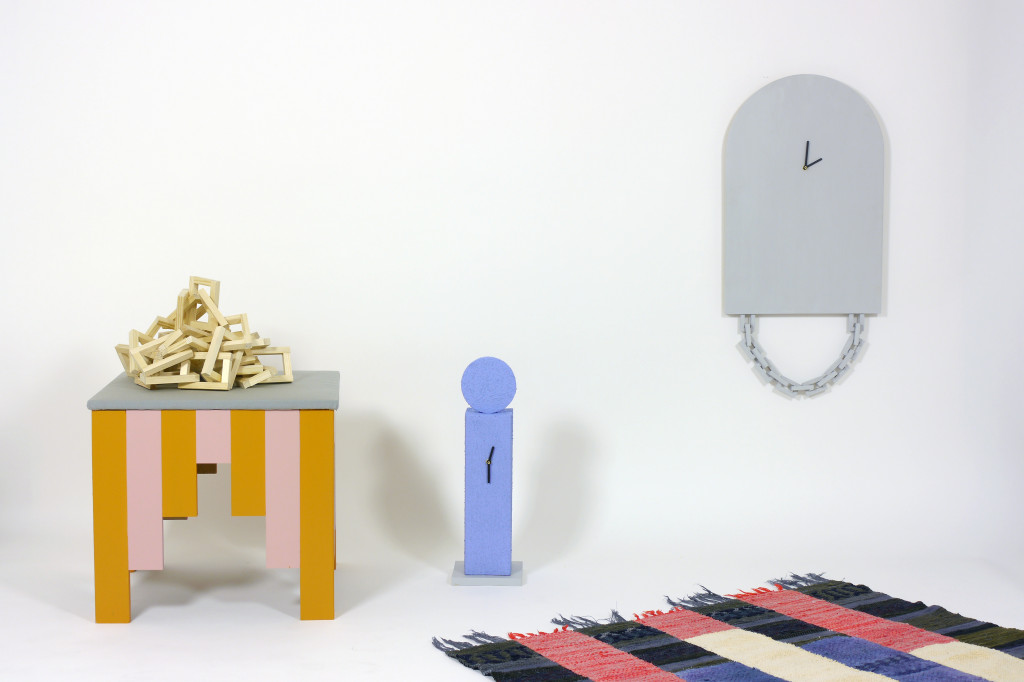 Omkompositioner by Jenny Nordberg
Omkompositioner by Jenny Nordberg 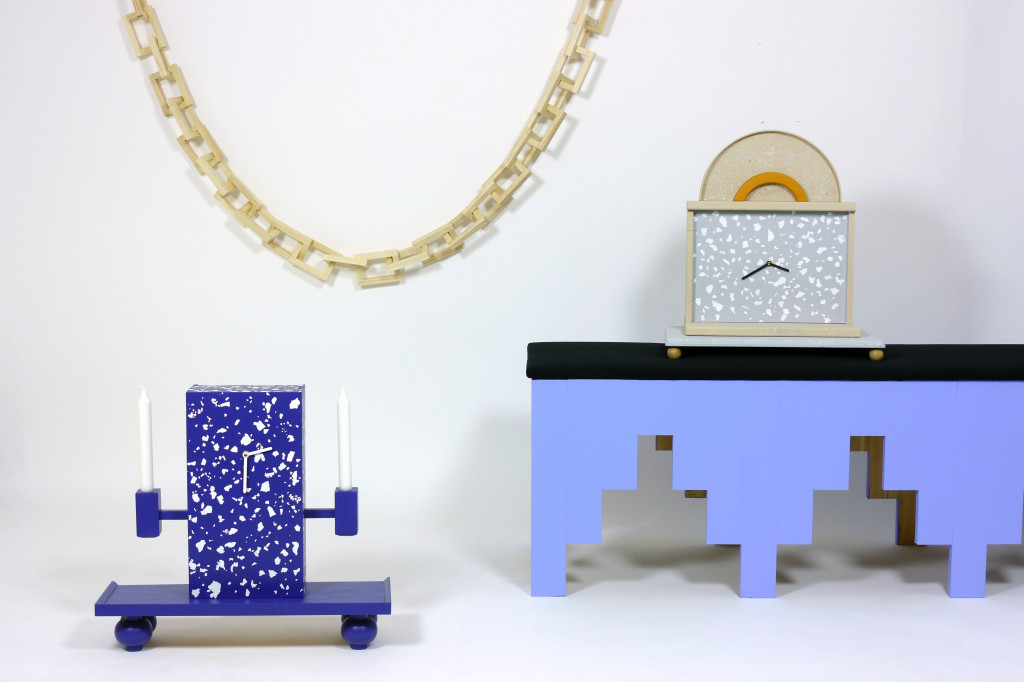 Omkompositioner by Jenny Nordberg
Omkompositioner by Jenny Nordberg 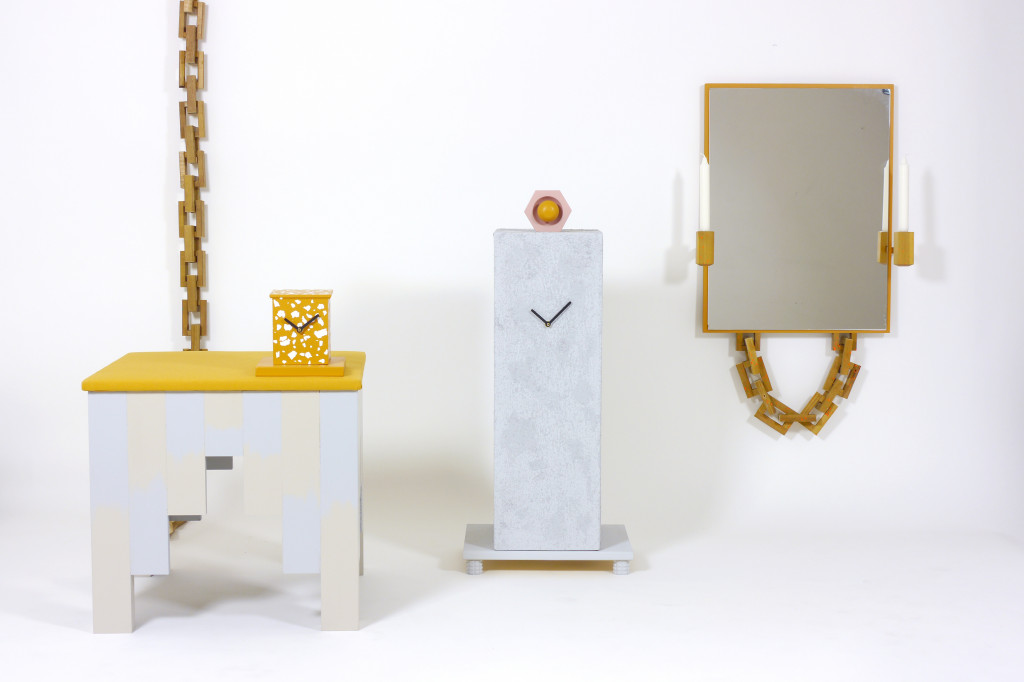
 Donated objects / Material supply
Donated objects / Material supply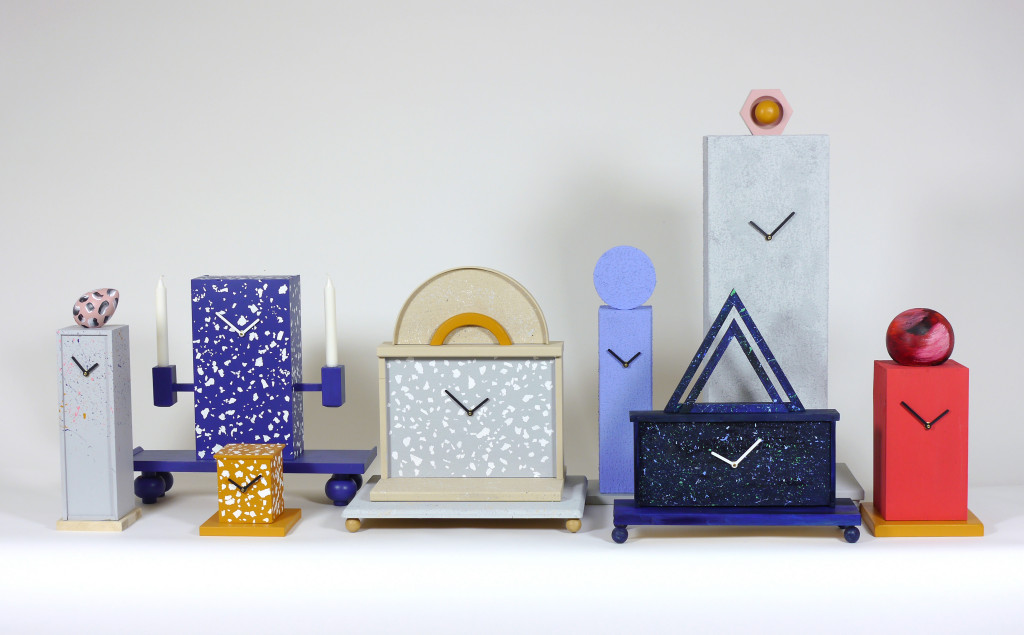 Clock collection
Clock collection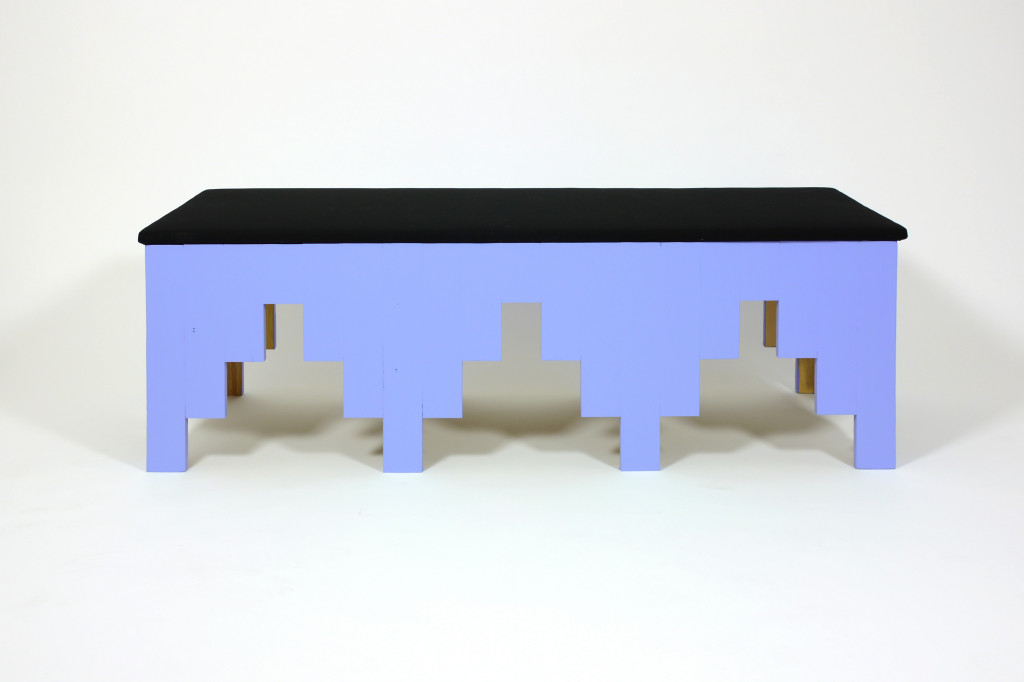 Omkompositioner - Bench
Omkompositioner - Bench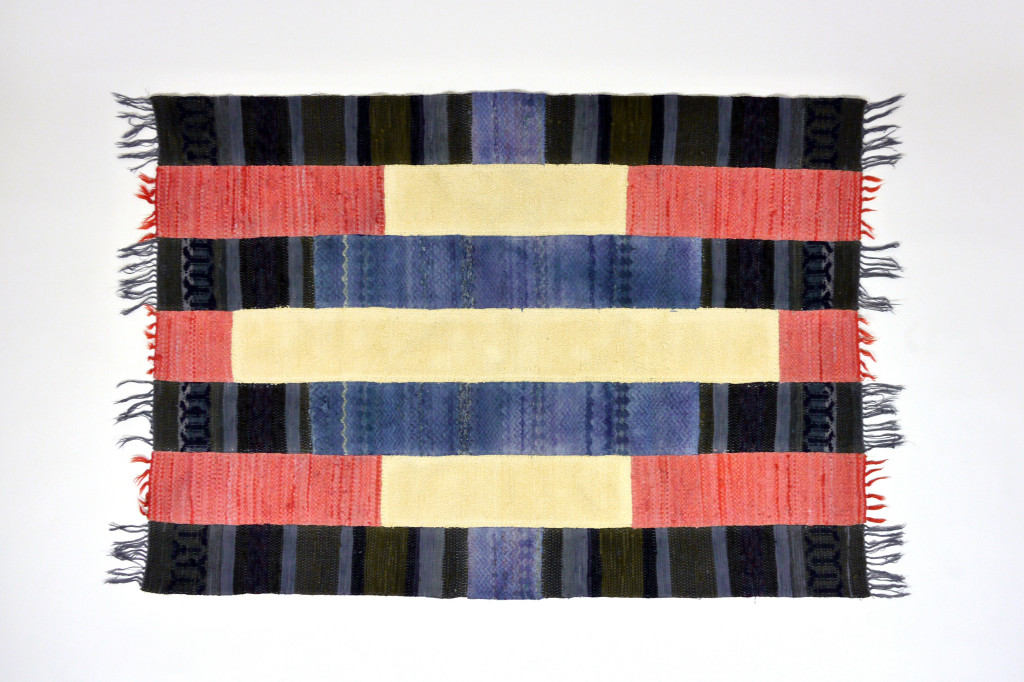 Omkompositioner - Carpet
Omkompositioner - Carpet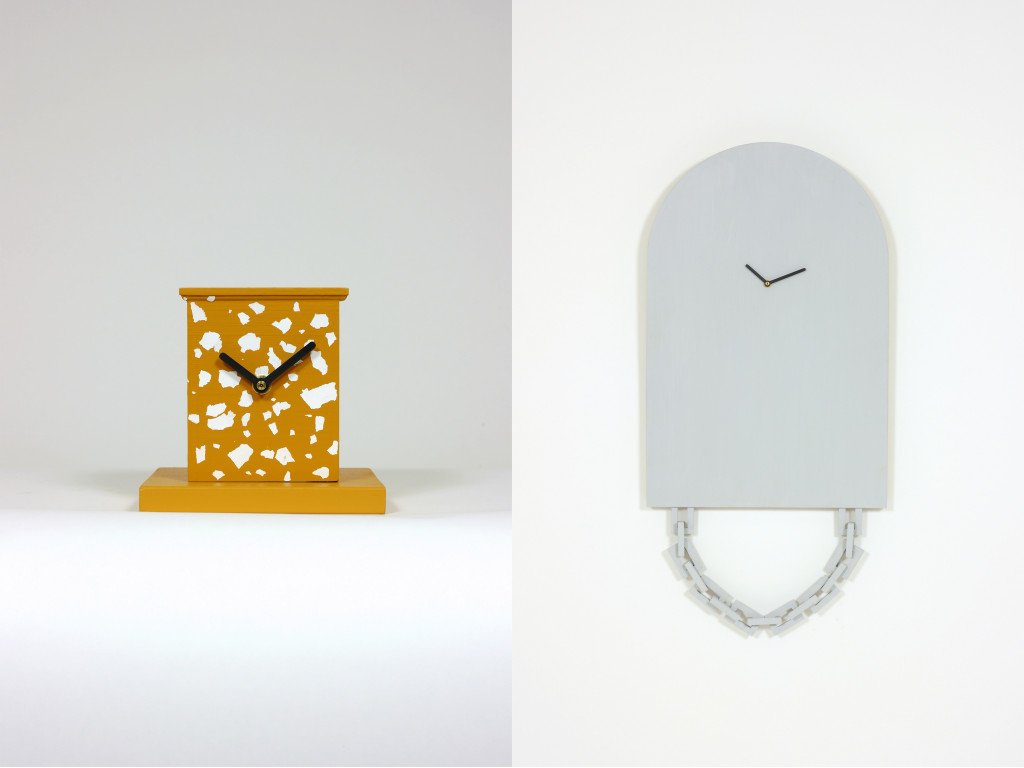 Omkompositioner - Clocks
Omkompositioner - Clocks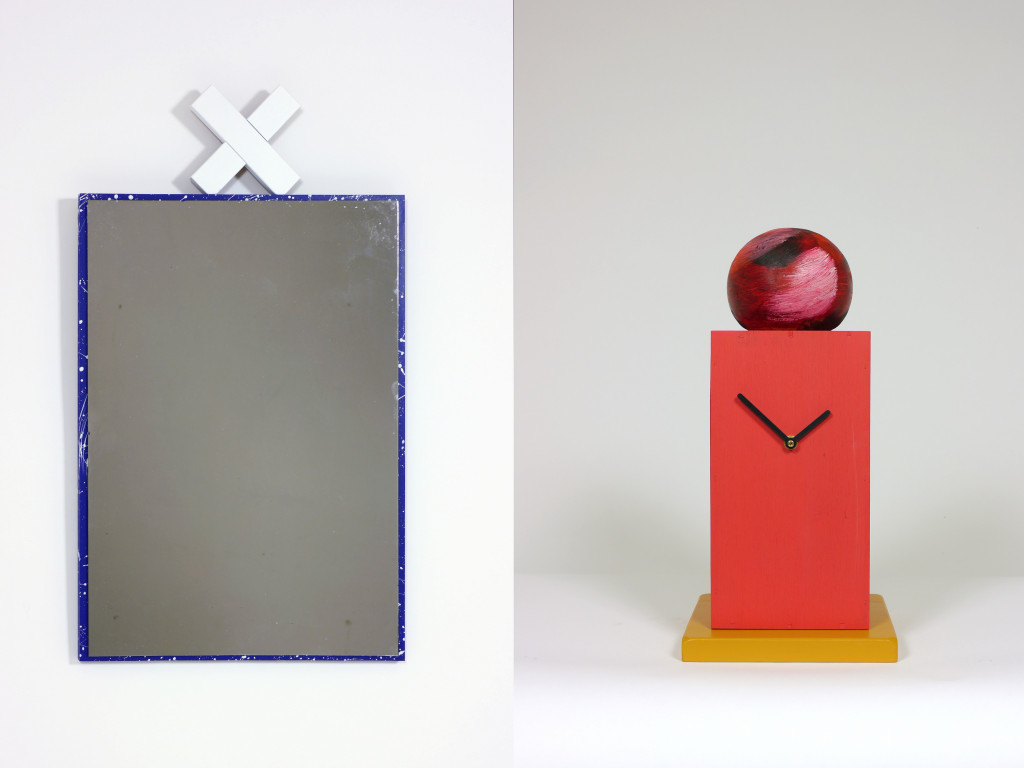 Omkompositioner - Mirror and clock
Omkompositioner - Mirror and clock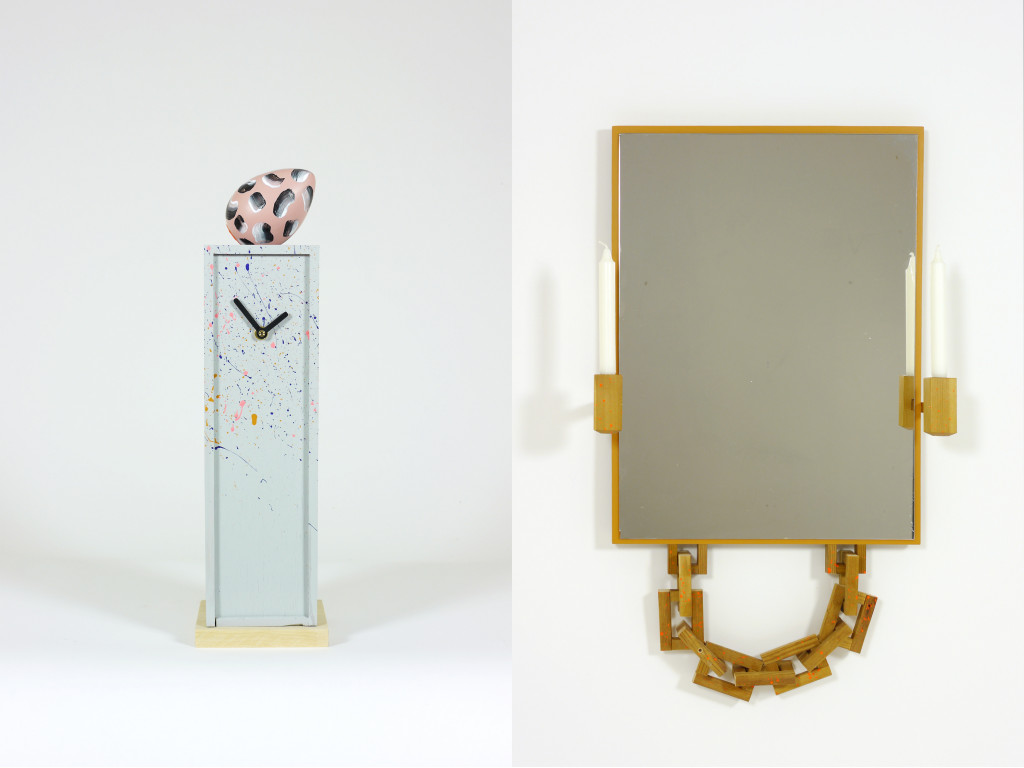 Omkompositioner - Clock and mirror
Omkompositioner - Clock and mirror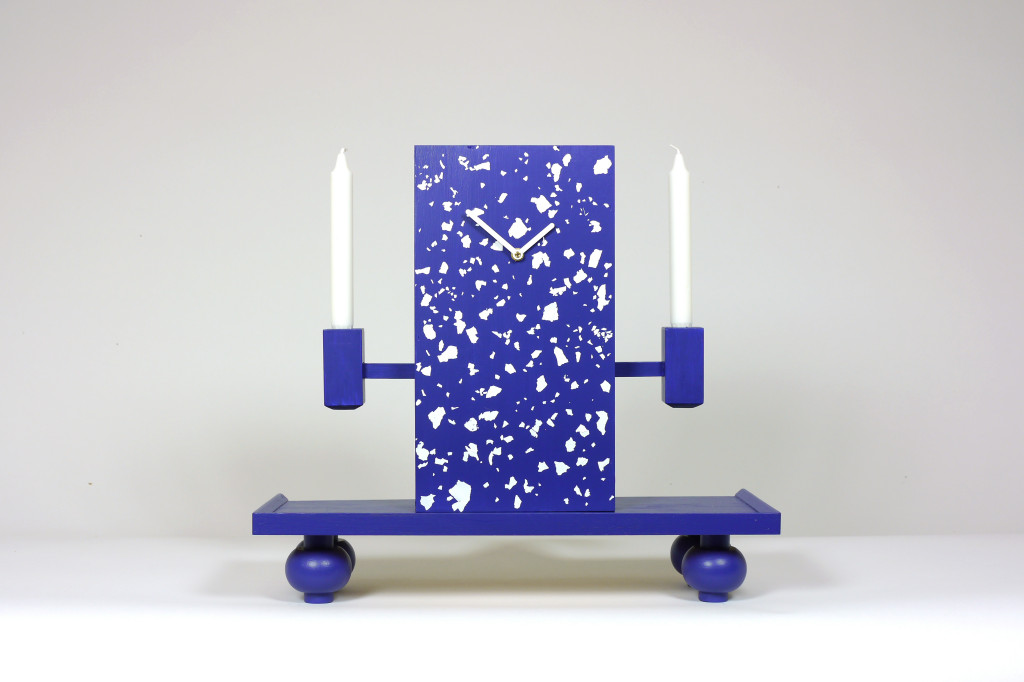 Omkompositioner - Clock
Omkompositioner - Clock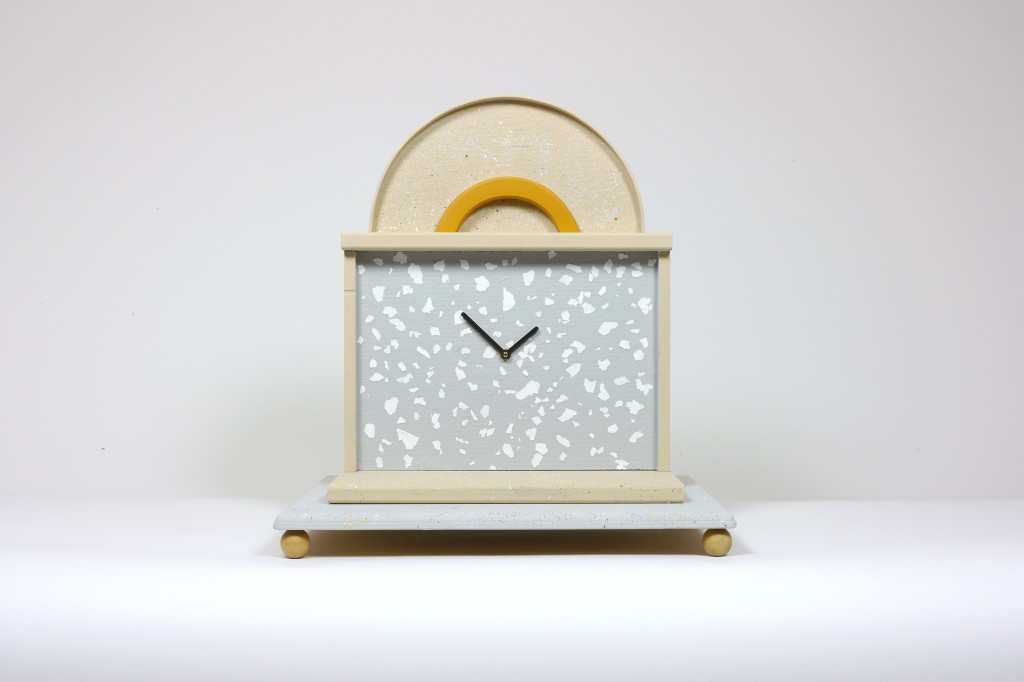 Omkompositioner - Clock
Omkompositioner - Clock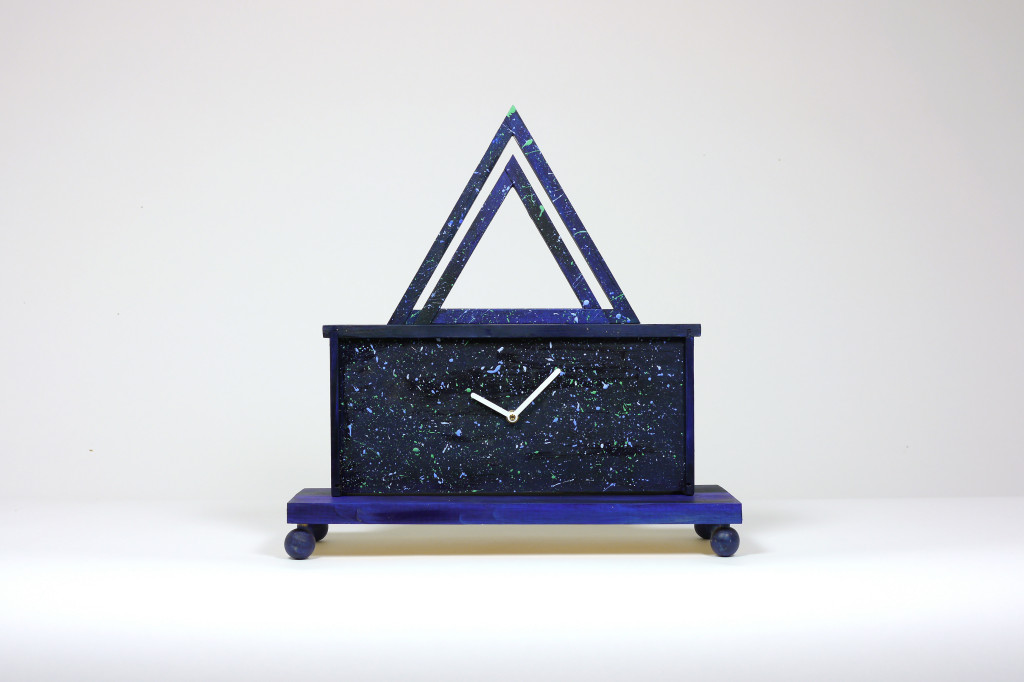 Omkompositioner - Clock
Omkompositioner - Clock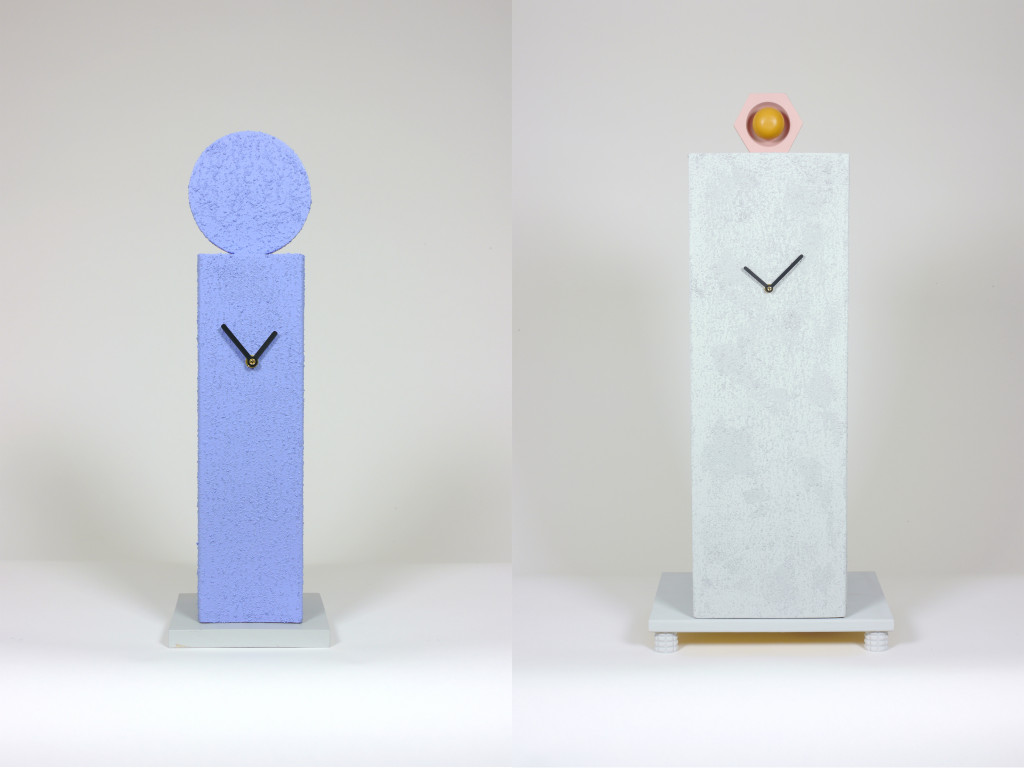 Omkompositioner - Clocks
Omkompositioner - Clocks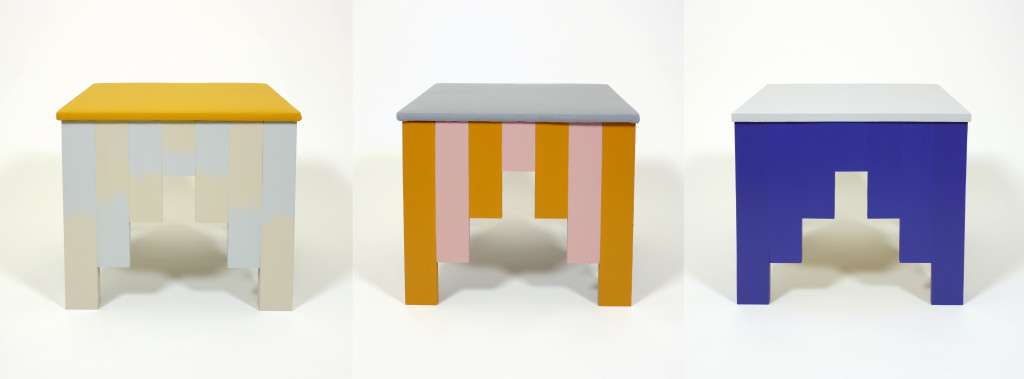 Omkompositioner – Stools and small table
Omkompositioner – Stools and small table 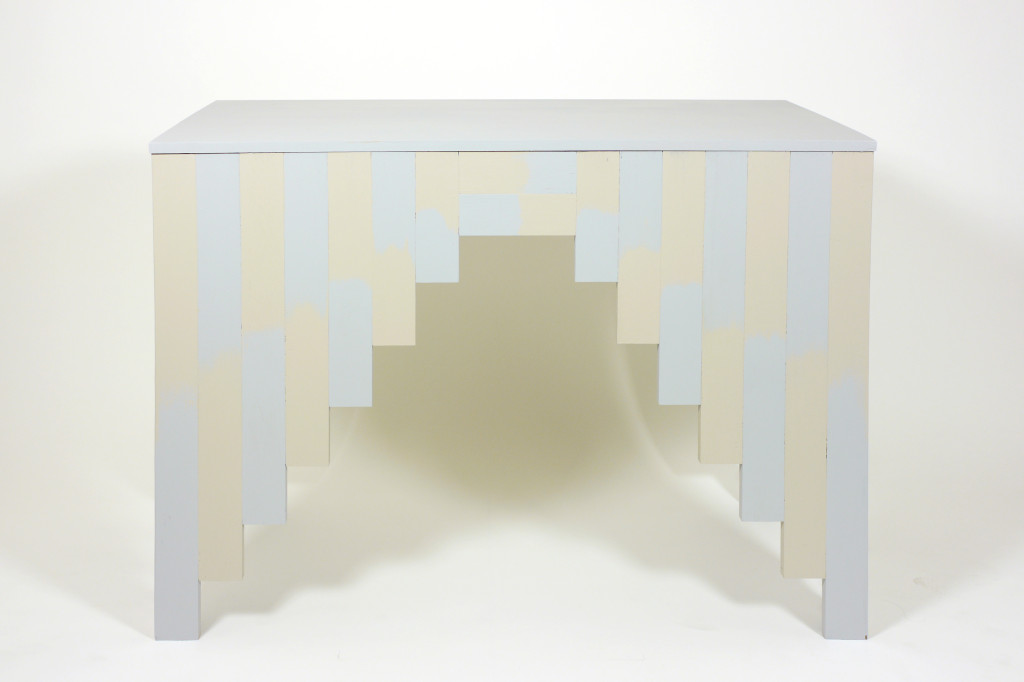 Omkompositioner – Table
Omkompositioner – Table 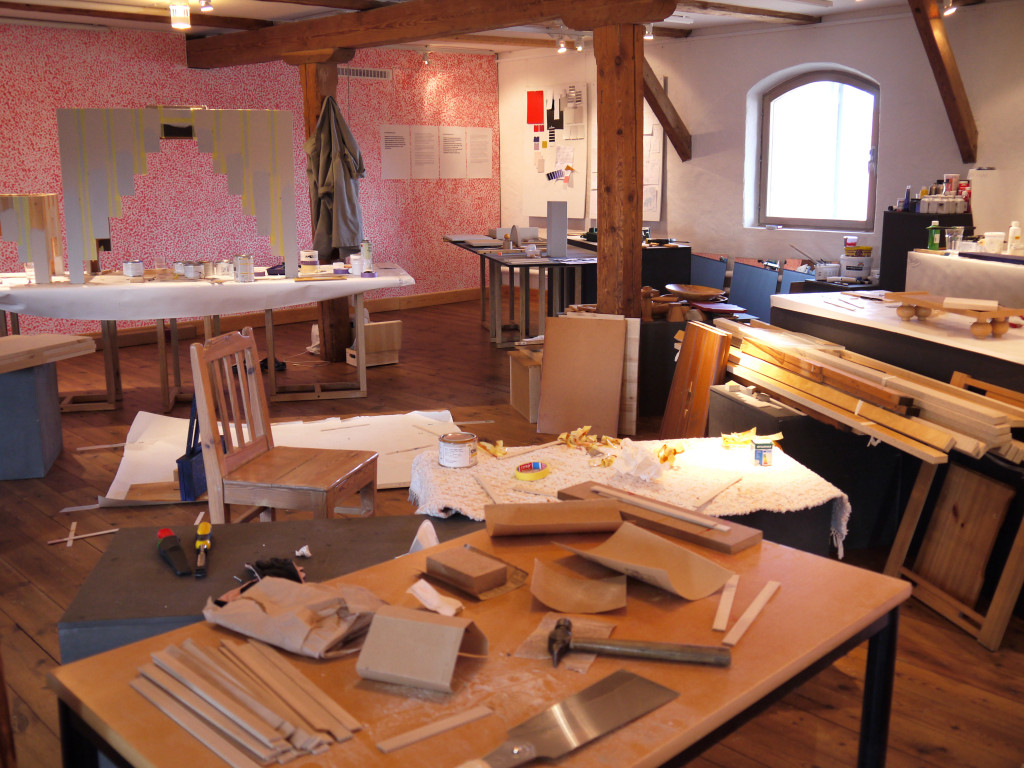 Omkompositioner - Museum workshop
Omkompositioner - Museum workshop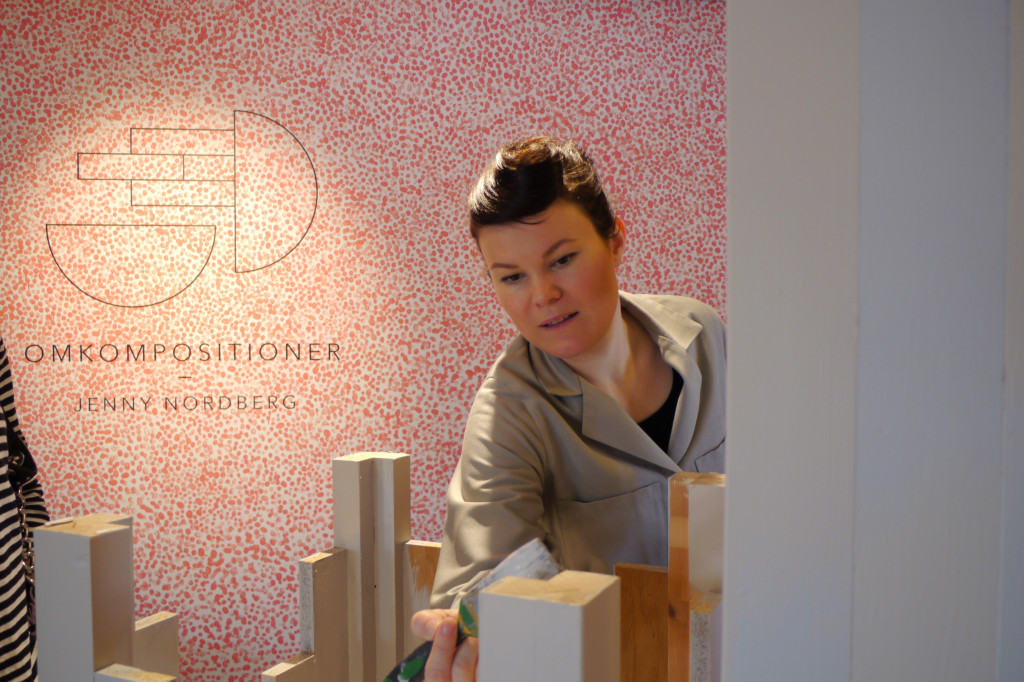 Omkompositioner - Work in progress
Omkompositioner - Work in progress Omkompositioner - Work in progress, cabinetmaker Hasse Waldemarsson
Omkompositioner - Work in progress, cabinetmaker Hasse Waldemarsson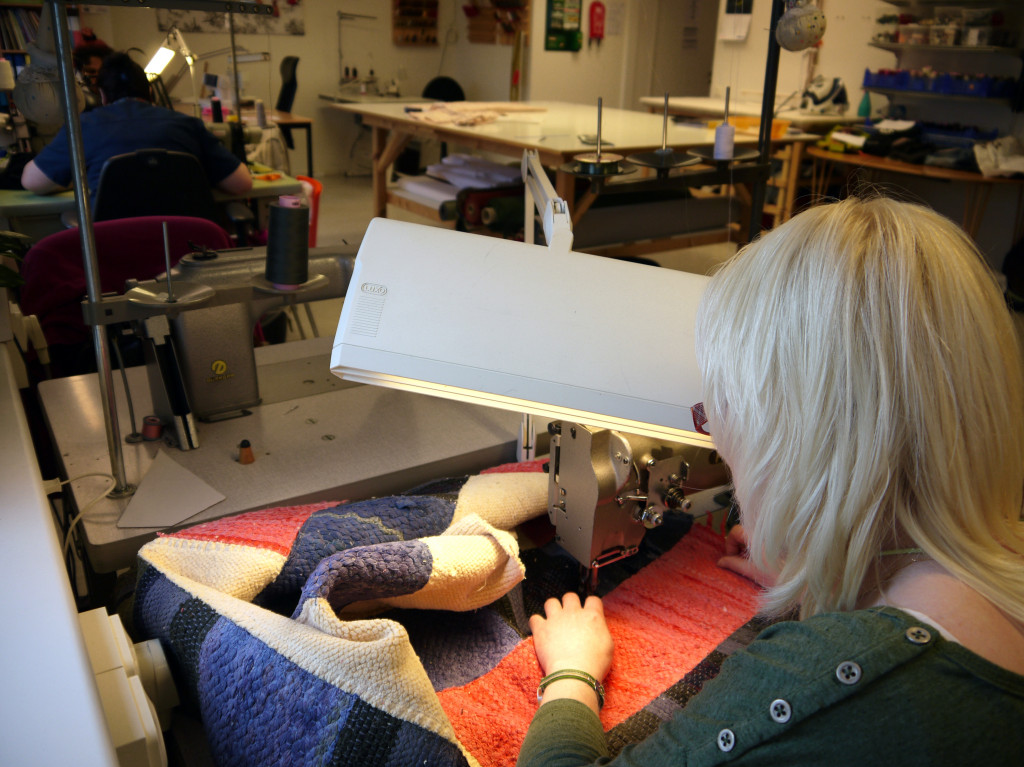 Omkompositioner - Work in progress, seamstress Ingela Dahlberg
Omkompositioner - Work in progress, seamstress Ingela Dahlberg Omkompositioner - Work in progress, cabinetmaker Mr Ipar
Omkompositioner - Work in progress, cabinetmaker Mr Ipar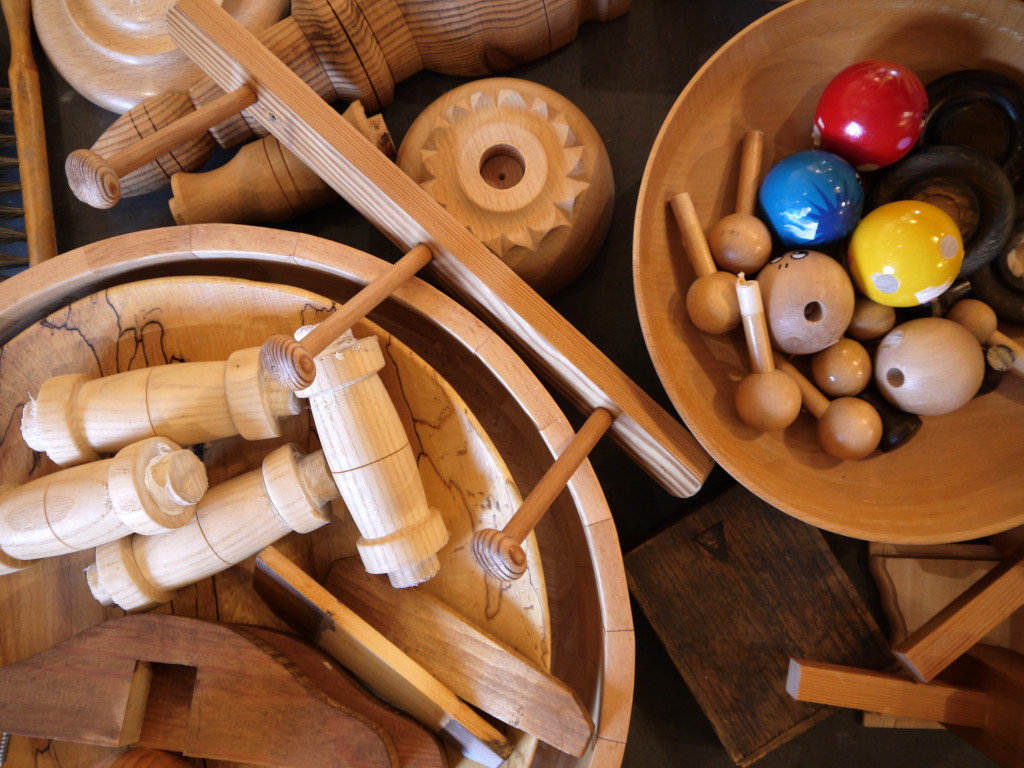 Omkompositioner - Work in progress, details
Omkompositioner - Work in progress, details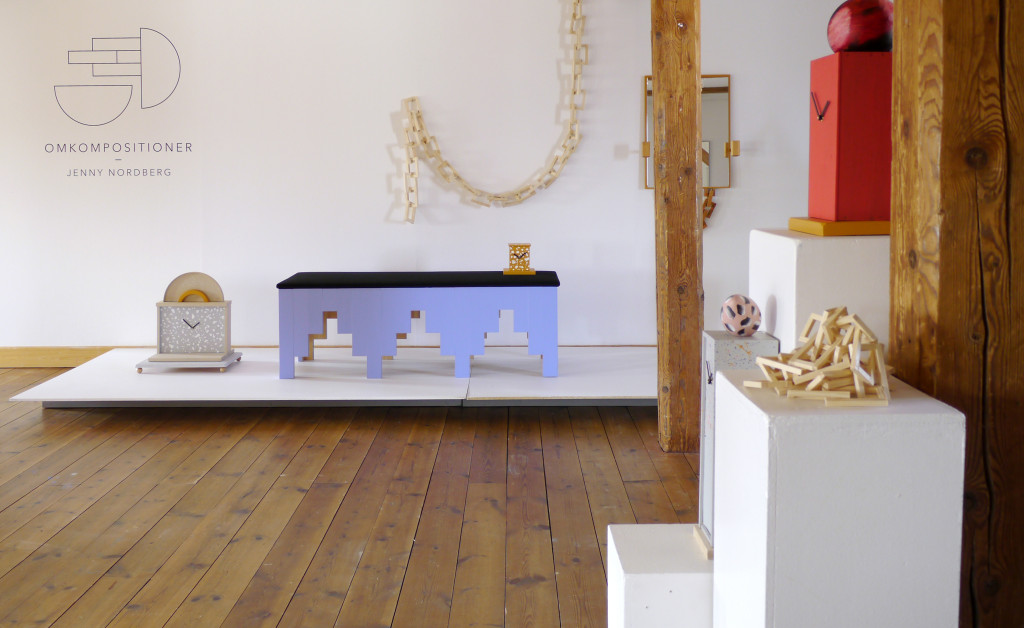 Omkompositioner - Exhibition open until 4th of May at Falkenbergs Museum
Omkompositioner - Exhibition open until 4th of May at Falkenbergs Museum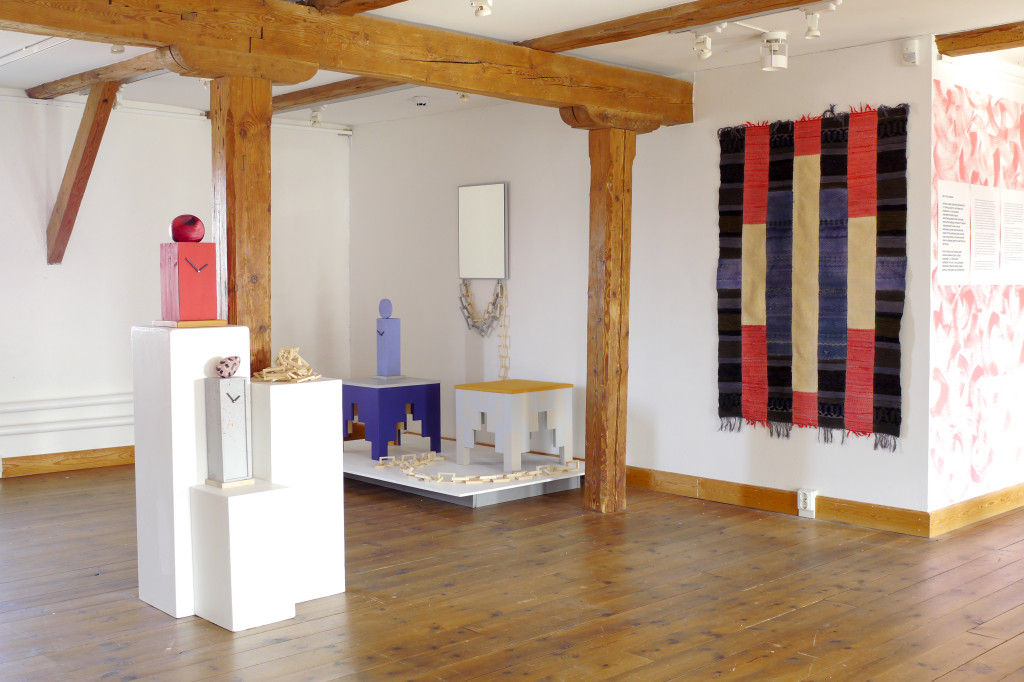 Omkompositioner - Exhibition open until 4th of May at Falkenbergs Museum
Omkompositioner - Exhibition open until 4th of May at Falkenbergs Museum
-
€1 Bracelet
Nearly all the accessories we can buy at various low price stores are made in China. A Chinese factory worker earns (after the 13-percent increase in 2012) between eight and nine Swedish krona per hour, which corresponds to today’s value of €1. The material in the €1 Bracelet is solid bronze. If you were to go to a scrap dealer and sell a €1 Bracelet the equivalent scrap value would be one Euro — one hour in a Chinese factory.
And no, a bracelet does not cost €1. It costs around €55 since the people involved in the making of the bracelet and its packaging all are paid according to Swedish agreement. In addition to a fair salary that you can live on, they have a work environment that is not harmful to them. They also have the right to join trade unions, and they do not work more than eight hours a day, five days a week.
Material: Bronze with over 80% recycled material.
Manufacturing: The bracelet is produced in Malmö. The packaging is made in Sweden from recycled cardboard. The stickers and information material come from a local print-on-demand shop.Can be purchased at Form/Design Center, Moderna Museet, Wannås and Vandalorum or at Center of Commerce.
Näst intill alla accessoarer vi kan köpa på olika lågpriskedjor är tillverkade i Kina. En kinesisk fabriksarbetare tjänar (efter den 13-procentiga höjningen 2012) mellan åtta och nio kronor i timmen, vilket motsvarar värdet av €1 idag. Materialet i €1 Bracelet är rent brons. Om du skulle gå till en skrothandlare och sälja ett €1 Bracelet motsvarar skrotvärdet en euro — en arbetad timme i en kinesisk fabrik.
Och nej, ett armband kostar inte €1. Det kostar mycket mer eftersom de personer som har arbetat med framställningen av armbandet och dess förpackning alla har löner enligt svenska avtal. Förutom en skälig lön som det går att leva på jobbar har de en arbetsmiljö som inte är skadlig för dem. I de fall de behöver skyddsutrustning finns det. De har också rätten att ansluta sig till fackförbund och de jobbar högst åtta timmar om dagen, fem dagar i veckan.
Material: Brons bestående av över 80% återvunnet material.
Tillverkning: Armbandet är producerat i Malmö. Förpackningen är tillverkad i Sverige av återvunnen kartong med etiketter och informationsmaterial från print-on-demand.Kan köpas på Form/Design Center, Moderna Museet, Wannås och Vandalorum eller på Center of Commerce.
-
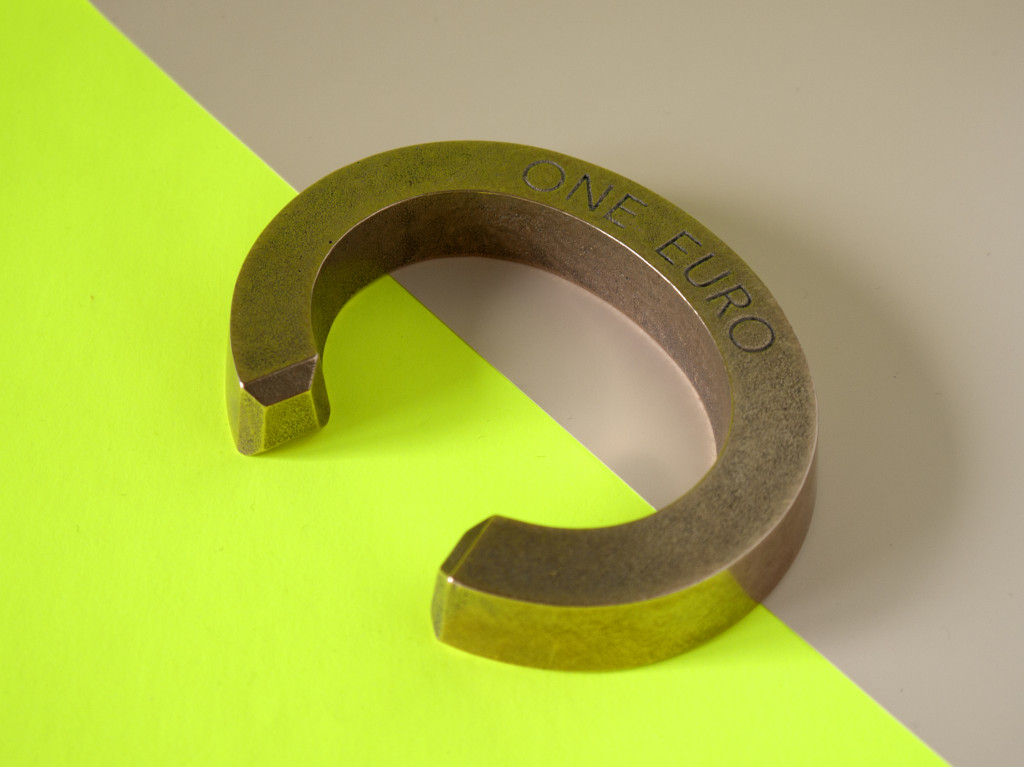

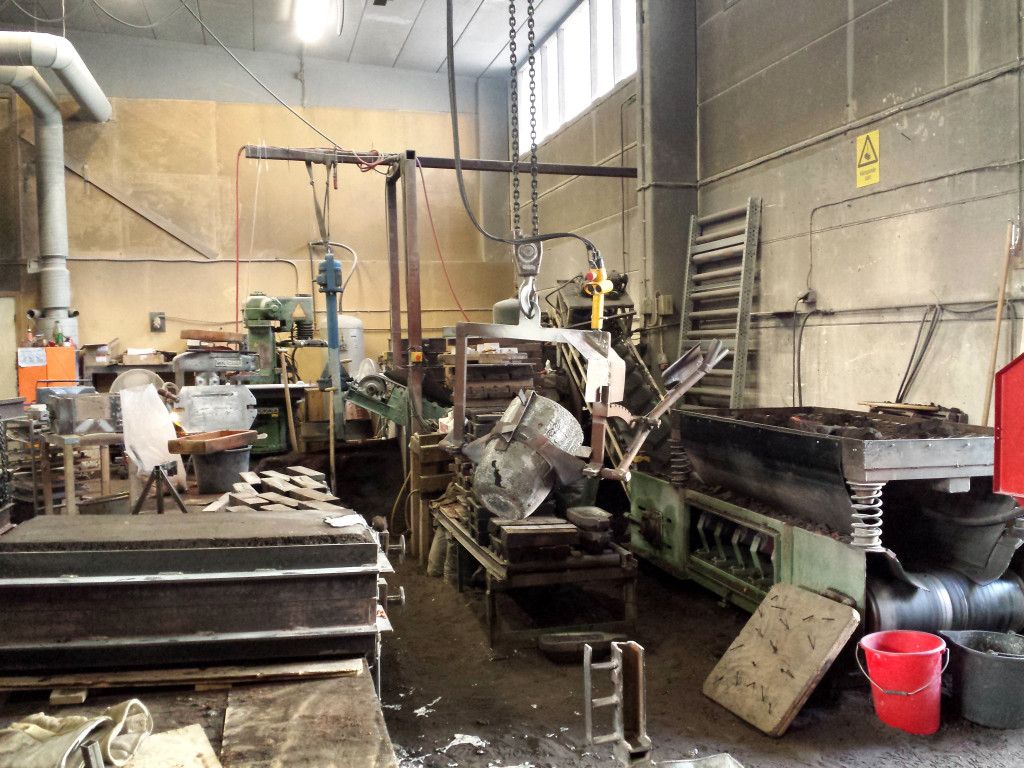 Rosengrens Gjuteri in Limhamn, Malmö
Rosengrens Gjuteri in Limhamn, Malmö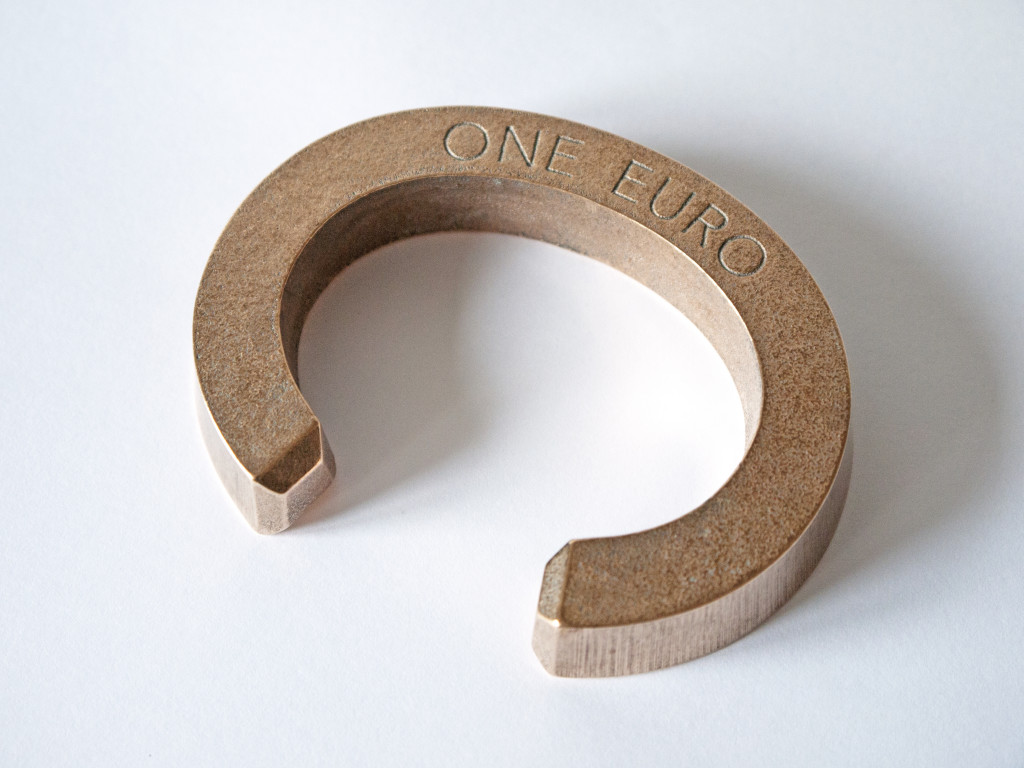
-
Human Shelf
Human Shelf is a collaboration with industrial designer Milan Kosovic. The project was done in the early summer of 2013 for the Folkets Hamn (“People’s Marina”) at the H+ area in Helsingborg. Human Shelf is part of a large-scale family of outdoor furniture and offers the possibility to hang out for many at the same time. In addition to Human Shelf the family also consists of Static Hammock and Super Seat. The material is boards and joists found in a warehouse in the harbour. The painted pattern is about Helsingborg and the people living there. >>>
Human Shelf – Consumption
Nearly twenty percent of the jobs in Helsingborg are linked to trade. So, almost one in five who work, work within trade. In the rest of the country the average is five percent.Static Hammock – Intolerance
Sweden, together with the rest of the Scandinavian countries, the Netherlands and Canada are the world’s most tolerant countries according the World Values Survey. But among young people living in Helsignborg the intolerance index 2010 is 18-19% higher than the national average for adults in Sweden.Super Seat – Housing shortage
In Helsingborg, the proportion of people living in a rented apartment is relatively high, 45%. As in many other Swedish municipalities, there is a shortage of housing. The building rate is to low and the arguments against building new rental units are multiple. The economic reasons, such as high production costs predominates. According to a survey conducted by SCB in 2010, this is a myth. Production costs vary greatly and it is possible to build inexpensive.Human Shelf är ett samarbete med industridesignern Milan Kosovic. Projektet gjordes i början av sommaren 2013 till Folkets Hamn på H+området i Helsingborg. Human Shelf ingår i en storskalig möbelfamilj för utomhusbruk och erbjuder häng för många. Förutom Human Shelf består familjen också av Static Hammock och Super Seat.Materialet är befintliga brädor och reglar som hittats i ett magasin i hamnen.Familjen har ett mönster som handlar om Helsingborg och helsingborgarna >>>
Human Shelf – Konsumtion
Nästan tjugo procent av Helsingborgs arbetstillfällen har kopplingar till handel. Alltså nästan var femte person som jobbar, jobbar inom handel. I övriga landet är det i genomsnitt fem procent som jobbar inom detta område.Static Hammock – Intolerans
Sverige är tillsammans med de andra Skandinaviska länderna samt Nederländerna och Canada världens mest toleranta land enligt World Values Survey. Men bland unga i Helsignborg låg Intoleransindex 2010 på 18-19% högre än riksgenomsnittet för vuxna i Sverige.Super Seat – Bostadsbrist
I Helsingborg är andelen boende i hyresrätt i relativt hög, 45%. Som i så många andra kommuner råder det också bostadsbrist. Det byggs för lite bostäder och argumenten mot att bygga nya hyresrätter är flera. De ekonomiska orsakerna som exempelvis höga produktionskostnader väger tyngst. Enligt en undersökning gjord av SCB 2010 är detta dock en myt. Produktionskostnaden per kvadratmeter varierar kraftigt och det går det att bygga billigt. -
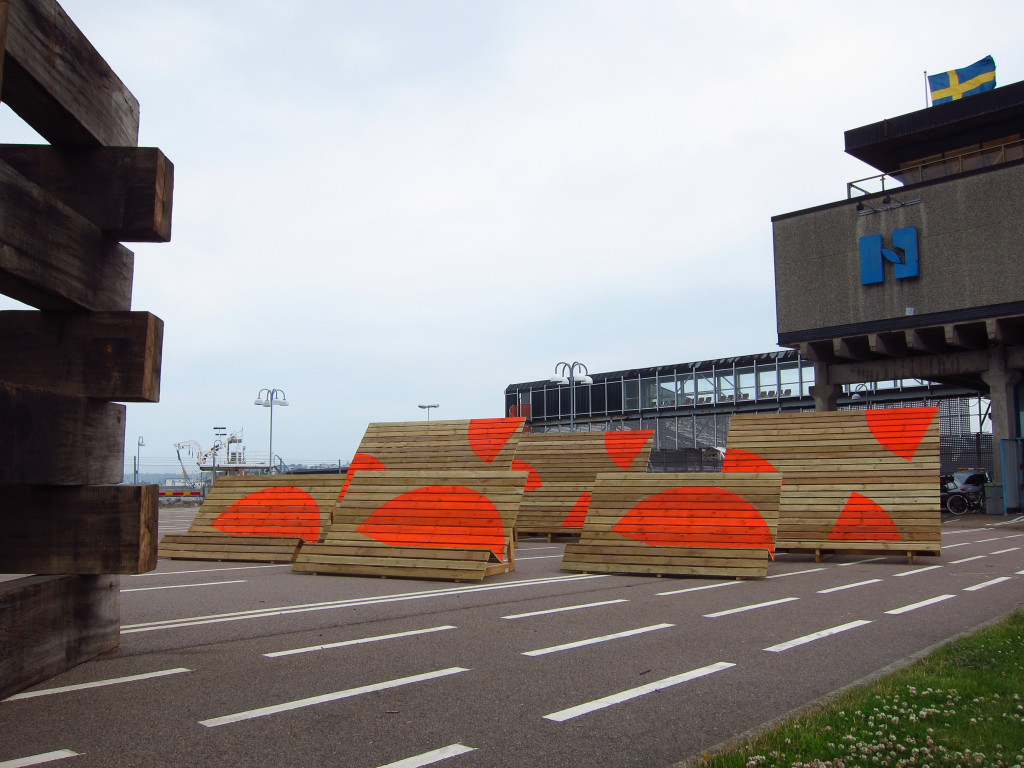 In collaboration with Milan Kosovic.
In collaboration with Milan Kosovic. In collaboration with Milan Kosovic.
In collaboration with Milan Kosovic.

